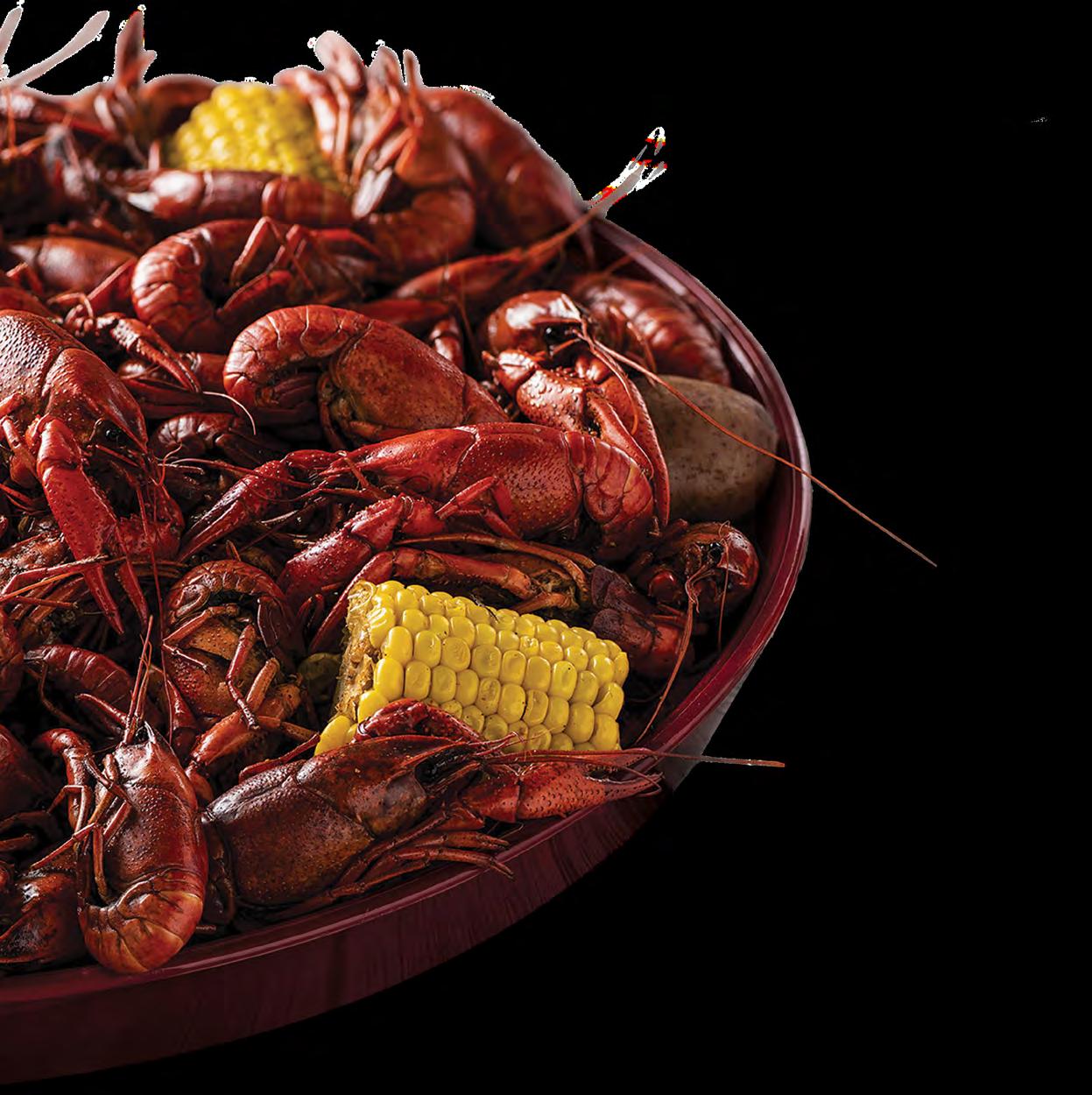The Sandwich Issue

SLOW COOKER
ROAST BEEF THE PO-BOY (AND GIRL) NEXT DOOR
SANDWICHES ANY ‘WICH WAY










SLOW COOKER
ROAST BEEF THE PO-BOY (AND GIRL) NEXT DOOR
SANDWICHES ANY ‘WICH WAY








Po-boys are one of the Gulf Coast region’s most recognizable foods. And, as with gumbo and jambalaya, we can’t agree who on makes the best version. There are so many great choices that picking one po-boy is like choosing your favorite child, or your favorite Rouses Market.
We have a story in this issue on how the po-boy got its name. The most popular theory relates to the New Orleans streetcar strike in 1929, when the po-boy (usually roast beef debris on French bread) was first served to striking workers — who were called “poor boys.” The name stuck, and people have been coming up with new po-boys ever since.
How you prefer your po-boy dressed probably depends on where you grew up; this regional sandwich has its own regional varieties. In New Orleans, “dressed” usually means it’s topped with mayonnaise, lettuce, tomatoes and pickles. But for the rest of the Gulf Coast, dressed usually means mayonnaise, mustard, lettuce and tomatoes — and this is what it means to me.
For many people, including me, Olde Tyme Grocery in Lafayette serves the best shrimp po-boy on Earth —

it’s piled high with more than half a pound of large Louisiana shrimp. It comes “fully dressed” with mayonnaise, ketchup, lettuce and tomatoes. (The addition of ketchup is reserved for fried seafood.) I don’t want the ketchup or the tomato — but if a tomato sneaks its way onto my sandwich, I’ll eat it.
My favorite hot roast beef sandwich comes from Darrell’s Famous Poboys in Lake Charles. The roast beef is tender and the bread sopped in gravy (to me, the messier the po-boy, the better). At Darrell’s, dressed means mayonnaise — regular or a homemade jalapeño mayo — plus mustard, lettuce, tomatoes and cheese. I get the homemade jalapeño, and so should you. And try to get there before the noon rush.
We make our own ham, turkey and roast beef po-boys at most of our Rouses stores. The bread is baked fresh daily, and we use our own fresh produce and deli meats, which we slice in-house. I think these are the best cold po-boys on the Gulf Coast. I recommend the turkey. When I remember, I take off the tomato.
Donny Rouse, CEO, 3rd Generation Photo by Channing Candies
Photo by Channing Candies
Creative Director & Editor
Marcy Nathan
Art Director, Layout & Design

Eliza Schulze
Illustrator
Kacie Galtier
Designer
Mary Ann Florey
Marketing Coordinator
Harley Breaux
Copy Editors
Patti Stallard
Adrienne Crezo
Advertising & Marketing

ron bonacci
Tim Acosta
Amanda Kennedy
Stephanie Hopkins
Nancy Besson
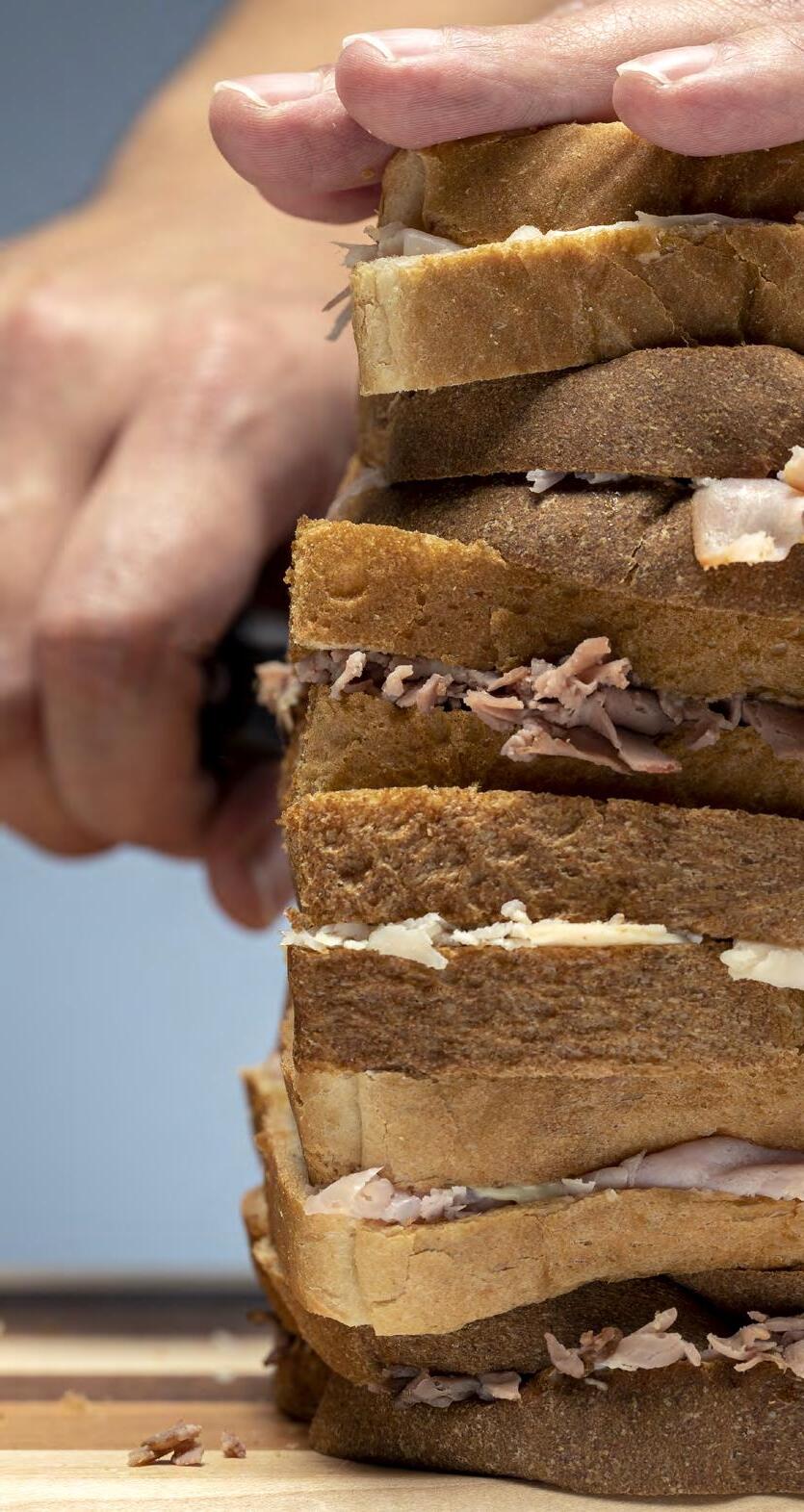
Taryn Clement
Marketing Interns
Peyton finch
Charlotte Ghrist

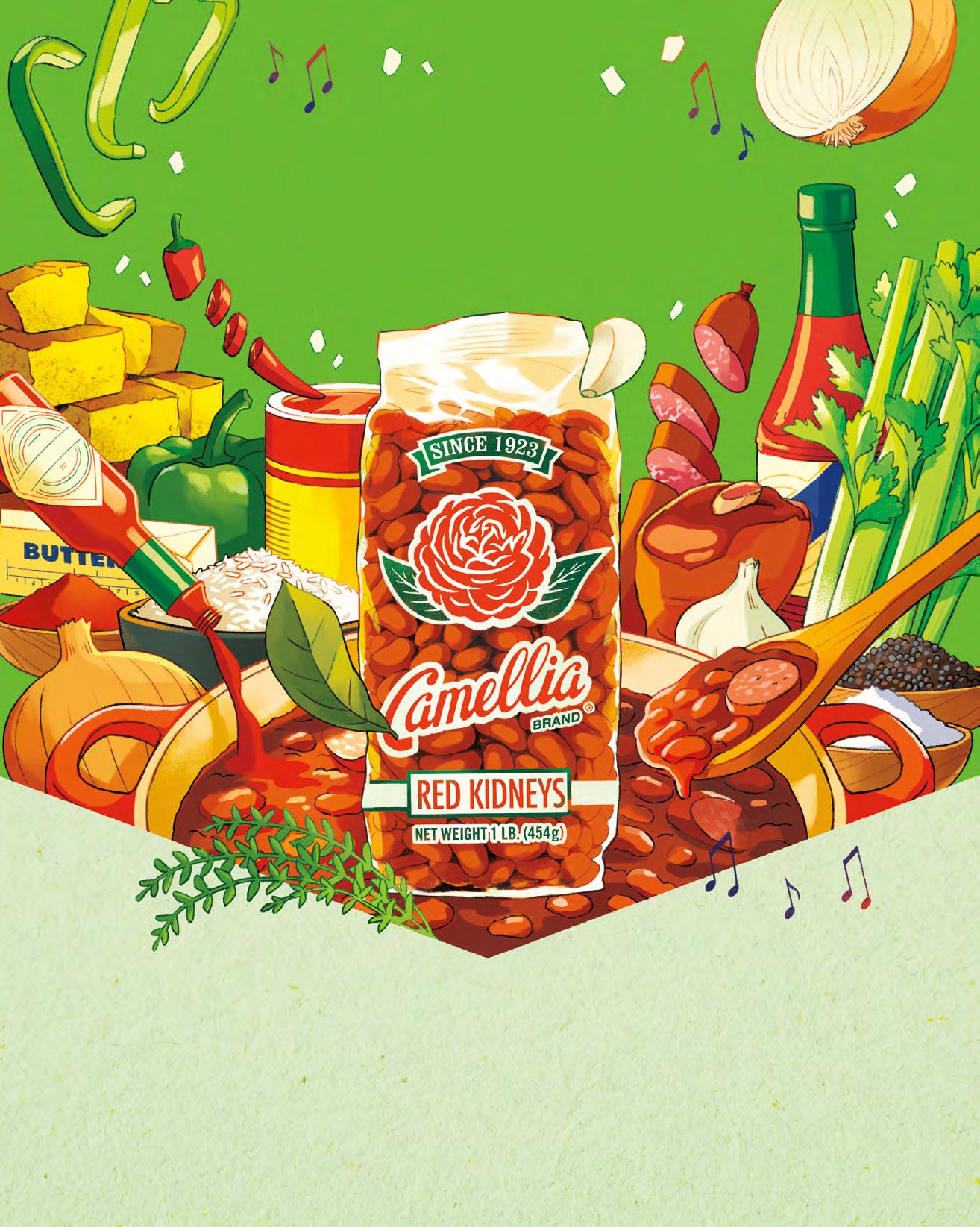

After two months of sampling po-boys, subs, clubs and maybe 10,000 finger sandwiches (see page 52), I didn’t think I could eat another piece of bread, let alone a whole sandwich. But then I discovered the Japanese fruit sandwich, the Ichigo Sando, at Yakuza House in Metairie. It’s made with fat strawberries and whipped cream mixed with mascarpone and crustless slices of shokupan, which is a milk bread. If our Gentilly cake was a sandwich, this would be it. I highly recommend it.
This issue of Rouses magazine you are holding was inspired by our designer, Mary Ann, who has a sandwich named just for her at Regina’s Kitchen, a local lunch spot in Mobile, Alabama, that her mother owns. There is also a sandwich named for her sister, Cecilia.

This all got me thinking: What kind of sandwich would I be, if I was a sandwich?
I’ll be the first one to admit that I’m a messy person, and I love a good roast beef po-boy — the smooshier and squishier, the better. To be honest, I ate my way through most of the po-boys on our 2023 best dressed list. Now, I am not a food critic, but I know what I like, and what I like is messy. I grew up on Parkway Bakery & Tavern in Mid-City (the messiest roast beef in town); Sammy’s Food Service & Deli in Gentilly; and Domilise’s Uptown, with Miss Dot behind the counter. I love Guy’s Po-Boys on Magazine Street; owner Marvin Matherne is a New Orleans original, like the po-boy itself. He’s a hoot.
But I’m not a po-boy, or a po-girl.
I couldn’t be a club either because, as Groucho Marx said, “I wouldn’t be a member of any club that would have me.” At 5’3” — okay, okay, 5’2” — I’m practically a shrimp, but just practically. And while I’ve been known to give a few fingers in my lifetime (especially while driving), I like to think I’m more substantial than a finger sandwich. Growing up, my sisters and I would fight to be the one who would
mess up the smooth surface of a new jar of peanut butter. “I got first dibs!” was like calling “Shotgun!” at our house. I always used a knife to carve my initials, like the Mark of Marcy.
My dad would make us toasted peanut butter and jelly sandwiches on Sundays, the one day a week my mom slept in. The smell of peanut butter, jelly, butter and toast sends me right back home.
I thought I invented the peanut butter and pickle sandwich, but as it turns out, it was almost as famous as peanut butter and bananas. The New York Times even has a recipe. Here’s mine: Bunny Bread or Evangeline — they are not the same thing, which we explain elsewhere in this issue — Jif Crunchy Peanut Butter, and dill pickle spears, sliced thin. It’s a little bit sweet, a little bit sour, a little bit crunchy, a little bit soft, just like me.
Now if I can just get Regina to put me on her menu…
 Photo by Channing Candies
Photo by Channing Candies



We moved Rouses headquarters to Schriever, Louisiana, in September 2021. We were supposed to move in October, but Hurricane Ida had other plans. The corporate cafeteria hadn’t even been built yet, but with three weeks of power outages, and the teams all dealing with the damage to our stores — as well as their own homes — the cafeteria would have to wait.
There aren’t many restaurants on Highway 311, so the Subway at the Rebecca Truck Plaza and Casino sort of became our employee cafeteria. Our Creative Director, Marcy — from New Orleans — nicknamed it “Galatoire’s” after the famous French Quarter restaurant because there was always a line to get in. With so few choices, you’d run into coworkers at Subway no matter what time you went. And after eight months of eating pretty much the same sandwiches three lunches a week, I cannot tell you how excited we were when Subway rolled out new menu items last summer.
There is a gas station at Rebecca’s. And there’s a story in this issue about gas station po-boys that includes a few that have been labeled “best of.” I would add the Shriever Subway’s MexiCali on wheat with extra jalapeños to that “Best of” gas station list — if it were a po-boy, which it is not. A po-boy is on New Orleansstyle French bread or French roll, which is crusty; a submarine or sub comes on a soft roll. Even if you have the same meat, cheese and toppings — say, roast beef, ham and Swiss — it’s not the same sandwich. The bread makes it a po-boy.

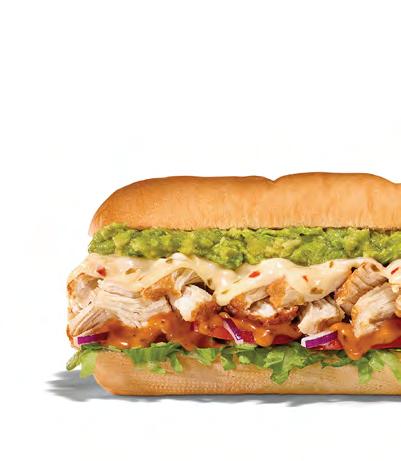
The sound of the waves as they crash on the shore…the feeling of sugar-white sands beneath your toes…the refreshing smell of the salty sea breeze…and the spectacular view from your balcony is an experience you can taste for yourself during your stay on the Alabama Gulf Coast. All five of your senses will thank you!
 Courtesy Subway®
Courtesy Subway®
Since 1919, family-run Community Co ee has been rooted in providing the best-tasting co ee to our communities and the people who make them great.

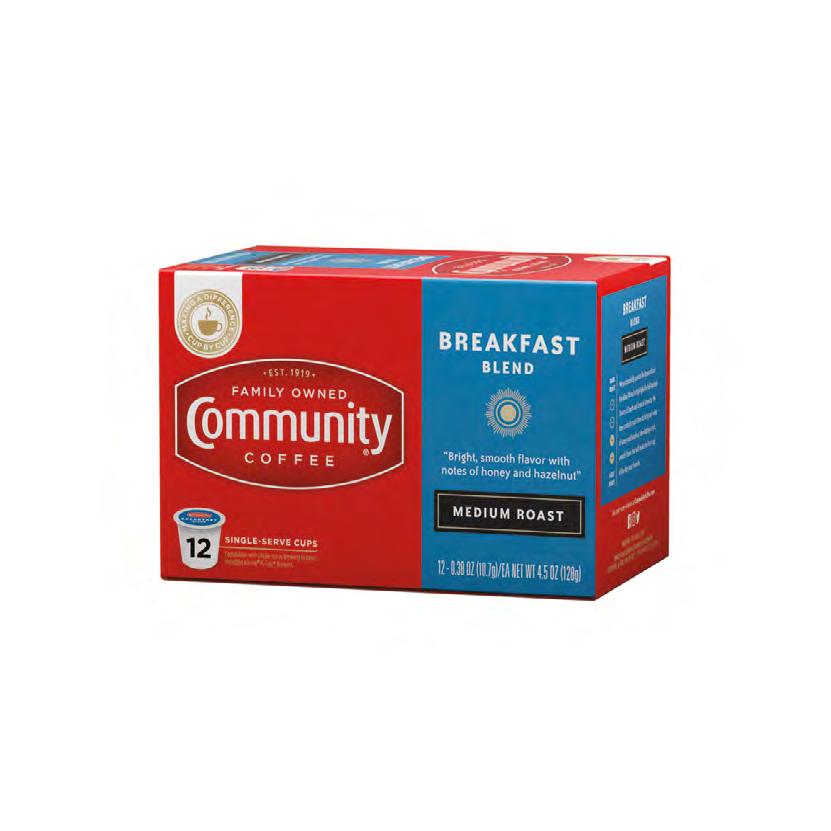
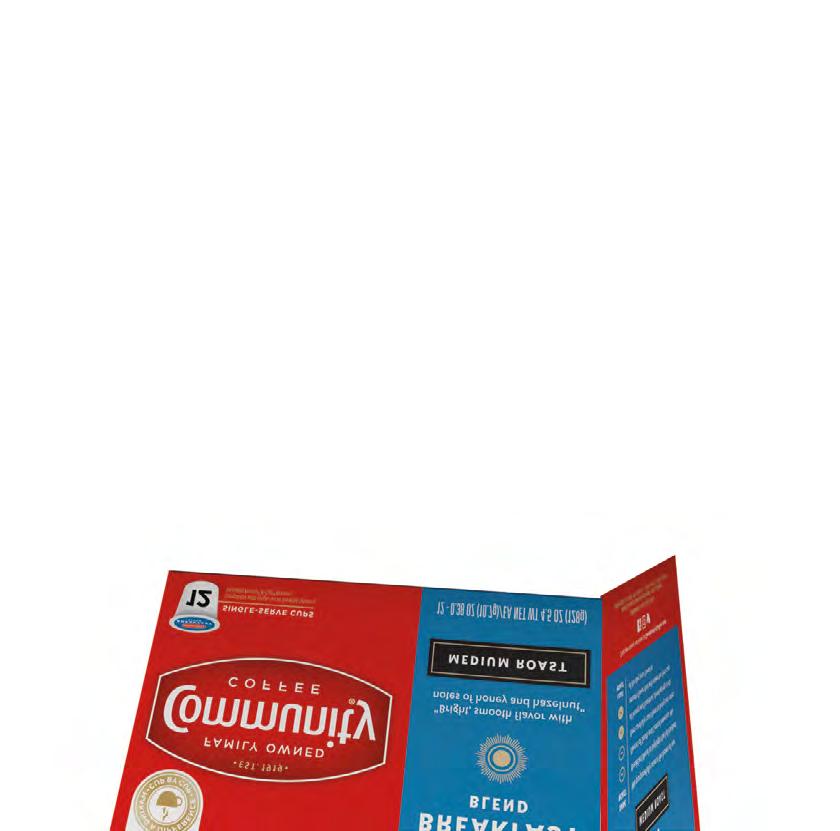
Experience the Co ee with Heart™
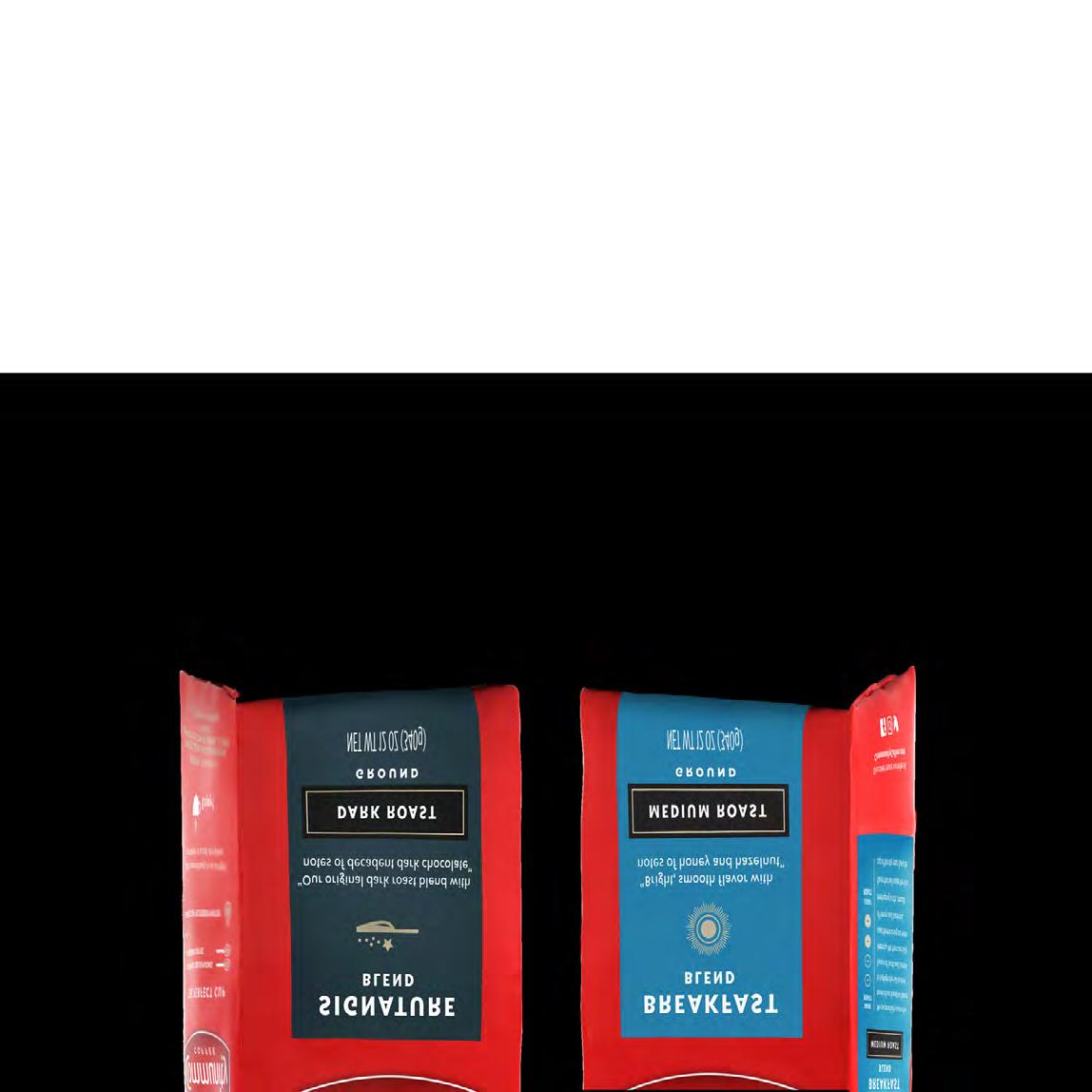

Do you ever go on vacation and, afterwards, feel like you should incorporate something from the trip into your daily life? I’ve done this so many times, from olive oil tasting in Tuscany to learning how to make a gin/muddled strawberry drink in a bar in Brooklyn. (I recently discovered while setting up a new phone that I’d lost the “note” in my Notes app from that trip, and I am lowkey devastated. Not that I’ve made one of those concoctions in probably 10 years — but still !) I love to bring a little bit of vacay back home. Most times it’s something really delicious or fun, but mainly it’s just a little touchstone to remind me of the good times.
Picture it: Paris, 2009. Three girlfriends having the time of their lives — baguettes in hands, berets on heads, escargot in mouths. OK, maybe that’s a bit too far.
We did lots of touristy things, but we also made a point to work in lots of genuine Parisian-style activity, like sitting at cafés, peoplewatching, snacking and having a glass of wine on a leisurely late afternoon. There’s nothing quite like it…. I discovered love for a few new (well, new to me !) dishes on this particular trip. Moules-frites was one, which is steamed mussels served with fries — who knew?! And the other standouts were croque monsieurs — a delicious ham sandwich made with gruyere, parmesan and béchamel sauce, then toasted in the oven — and its better half, the croque madame — same, but topped with a sunny-side-up fried egg. My mouth is watering just thinking about that!
After returning stateside, I was home for lunch a few days later, making a sandwich. Boy, did it look pitiful compared to those scrumptious French sandwiches. Inspiration struck and, while I didn’t want to start frying eggs on my lunch hour, I did decide to play around with the plain old turkey-on-wheat I had been eating. Given the constraints on time, attempted constraints on my calorie intake, and minimizing the mess to clean up, I had to get a bit creative. Using Rouses Bread, lightly “buttered” with Brummel & Brown, deli sliced ham and Swiss cheese, I pulled out my panini press (TBH, it was an off-brand George Foreman Grill!) and voilà !
Ali’s ridiculously bad imitation of a croque monsieur was born — and it was my go-to lunch for the better part of a year. So far, my 2023 lunches have been mostly turkey-on-wheat. I need some Paris in my life, tout de suite!


 Photo by Channing Candies
Photo by Channing Candies
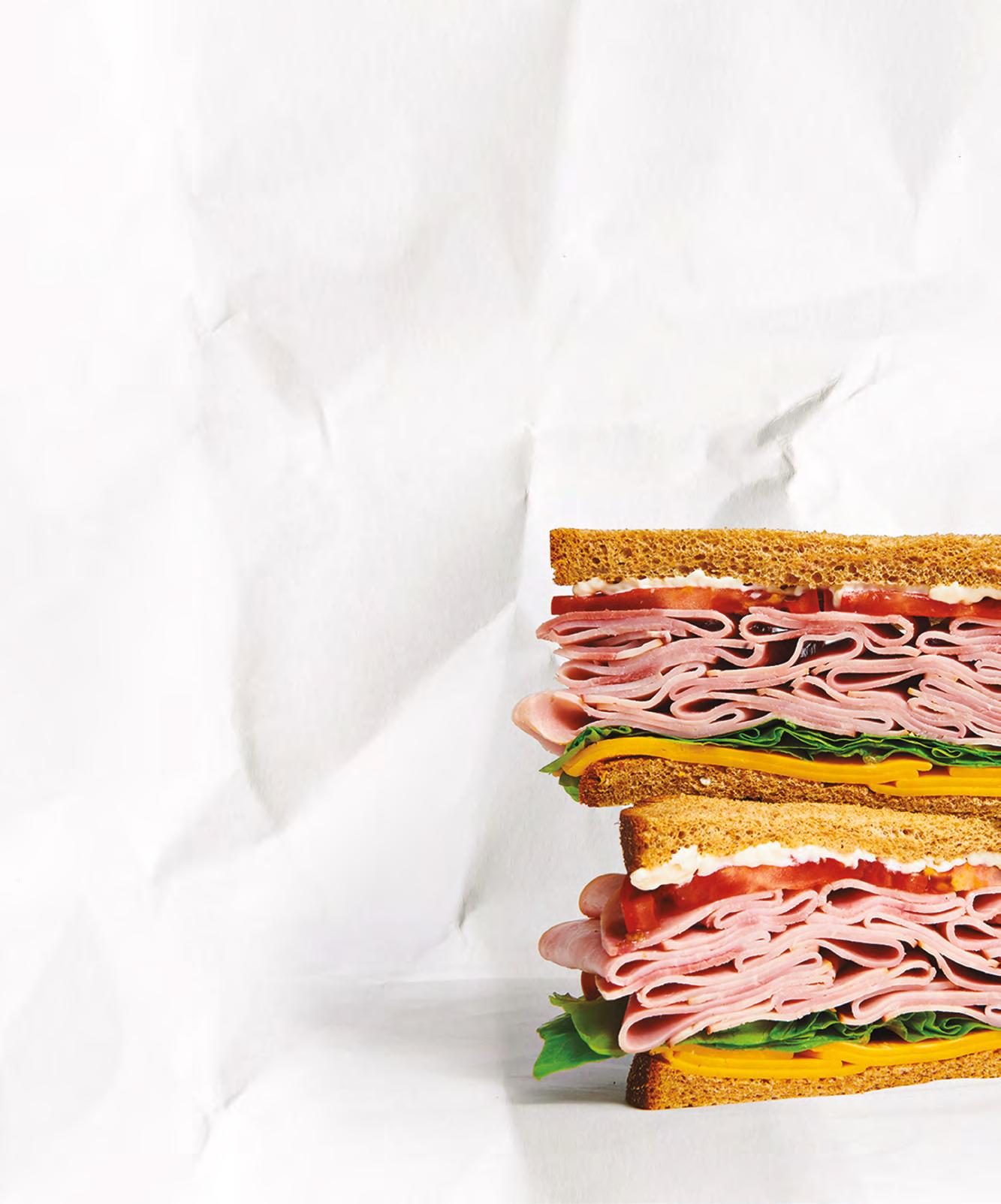



SARAH BAIRD
Sarah Baird is the author of multiple books, including New Orleans Cocktails and Flask, which was released in summer 2019. A 2019 Knight Visiting Nieman Fellow at Harvard University, her work has been featured in The New York Times, Washington Post, Saveur, Eater, Food & Wine and The Guardian, among others. Previously, she served as restaurant critic for the New Orleans altweekly, Gambit Weekly, where she won Critic of the Year in 2015 for her dining reviews.
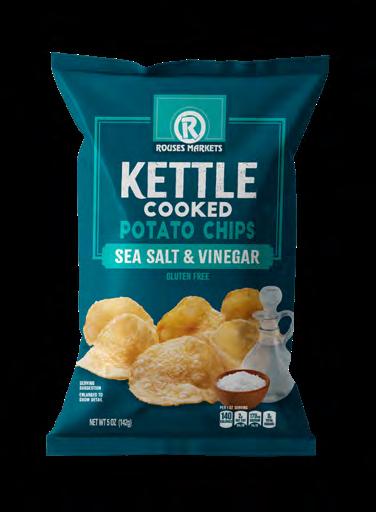
David W. Brown is a freelance writer whose work appears in The Atlantic, The New York Times, Scientific American and The New Yorker. His most recent book, The Mission: A True Story, a rollicking adventure about a motley band of explorers on a quest to find oceans on Europa, is in bookstores now. Brown lives in New Orleans.
Susan Langenhennig Granger is editor of Preservation in Print magazine and director of communications and marketing for the Preservation Resource Center in New Orleans. Prior to that she was a news editor, reporter and feature columnist for The TimesPicayune and NOLA.com.
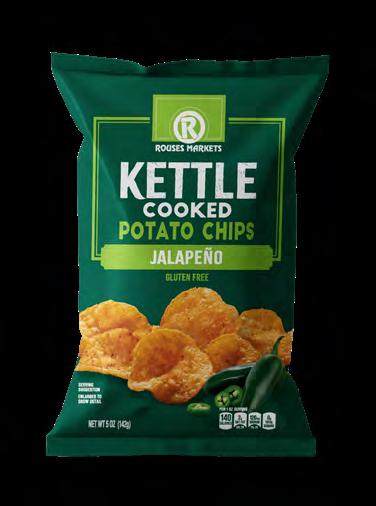
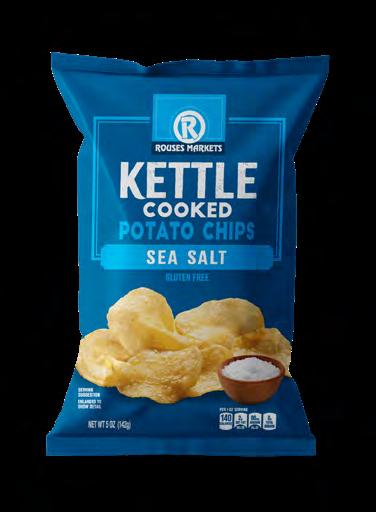
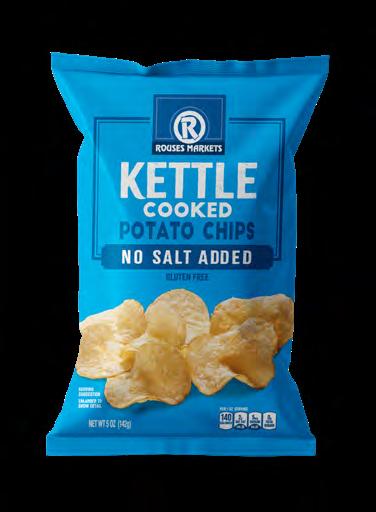
James Karst is an award-winning writer, researcher and editor. He was part of a team at The Times-Picayune that won two Pulitzer Prizes, and he won a Press Club of New Orleans Award for a story he wrote about Louis Armstrong’s childhood. He is currently the Director of Communications and Marketing at the Coalition to Restore Coastal Louisiana.



ARROW-CIRCLE-RIGHT I like a Reuben + Rachel, which has both corned beef and pastrami. They have a similar flavor, but the pastrami is a little spicier. I always add extra Thousand Island dressing, too. If I order at a deli, I get a half sour pickle with it, but when I make it at home with our Dietz & Watson corned beef and pastrami, I serve it with a Wickles Pickle.
– Mike Westbrook, Director of Deli, Cold Cuts & SushiARROW-CIRCLE-RIGHT When it comes to sandwiches, I am a sucker for a good po-boy. Although there are many different takes on this classic sandwich — and normally, I would go for a fried oyster or fried shrimp version — my favorite has to the be Darrell’s Special from Darrell’s in Lake Charles. This po-boy comes with ham, turkey, roast beef, American cheese, Swiss and provolone on a house-made bun with roast beef gravy, jalapeño mayo and all the fixin’s! I always get a large size with plans of eating half later, but by the time I leave, I have eaten the whole sandwich. How can I resist?! Each time I visit Lake Charles, I make it a point to go to Darrell’s. Their delicious food and hometown bar atmosphere keep you coming back for more. It feels like home.
– Brooke Bueto, Deli Merchandiser


ARROW-CIRCLE-RIGHT I live for a traditional bánh mi: soft but crusty French bread (lightly buttered and slathered with aioli), pork, pâté, cilantro, carrots, cucumbers and jalapeños. New Orleans’ West Bank is a haven for all the varieties of bánh mi. While you are grabbing your whole Peking duck at Hong Kong Market, don’t sleep on their bánh mi — it’s top-notch!
– Kim Neal, Deli & Cold Cuts Category Manager
FRENCH FRIED PO-BOY
ARROW-CIRCLE-RIGHT I can’t go two weeks without thinking about a sloppy roast beef debris po-boy with a side of French fries. Then, my mind is completely overcome with the thought of a French fried po-boy from Jeanfreau’s in Chalmette. Yes, you heard correctly: a French fried po-boy. It is a pile of crispy French fries covered with melted cheese and topped with delicious roast beef debris
and gravy. Don’t forget the mayonnaise and the napkins. You’re welcome.
– Mickey Bordelon, Deli Merchandiser
BRIOCHE GRILLED CHEESE
ARROW-CIRCLE-RIGHT My favorite sandwich is a brioche grilled cheese with Dietz & Watson Tavern Ham and Smoked Gouda with just a little bit of Dietz & Watson Horseradish Sauce to give the sweet, smoky taste a little kick. Have to have it with bread & butter pickles.
– Lori Sims, Deli Merchandiser
THE MARY ANN
ARROW-CIRCLE-RIGHT One of my favorite sandwiches is the one my mom named after me! You can read about it on page 58.
– Mary Ann Florey, Designer
MONTE CRISTO
ARROW-CIRCLE-RIGHT The Monte Cristo has always been my favorite sandwich. It’s sweet and savory. It’s basically deep-fried French toast with smoky ham and turkey, melty cheese and sweet preserves. The first one I ever had was at Bennigan’s. We stopped there on our way to see Death Cab for Cutie at the House of Blues. I can still taste it more than a decade later.
– Kacie Galtier, Illustrator and DesignerARROW-CIRCLE-RIGHT Bánh mi.
– Peyton Finch, Intern
ARROW-CIRCLE-RIGHT Bánh mi, too.
– Charlotte Ghrist, Intern
ARROW-CIRCLE-RIGHT I’m not one for picking favorites; my sandwich choice changes week to week. However, when I picture a sandwich, I immediately think of a BLT: big slices of white bread, crispy bacon, tomatoes, mayo and lettuce. It’s a classic in my mind and always makes me think of my grandmother, who had a beautiful garden right on the Vermillion River. She made the best BLT with her own garden-ripe tomatoes.
– Eliza Schulze, Art DirectorCORE HYDRATION PERFECTLY MATCHES
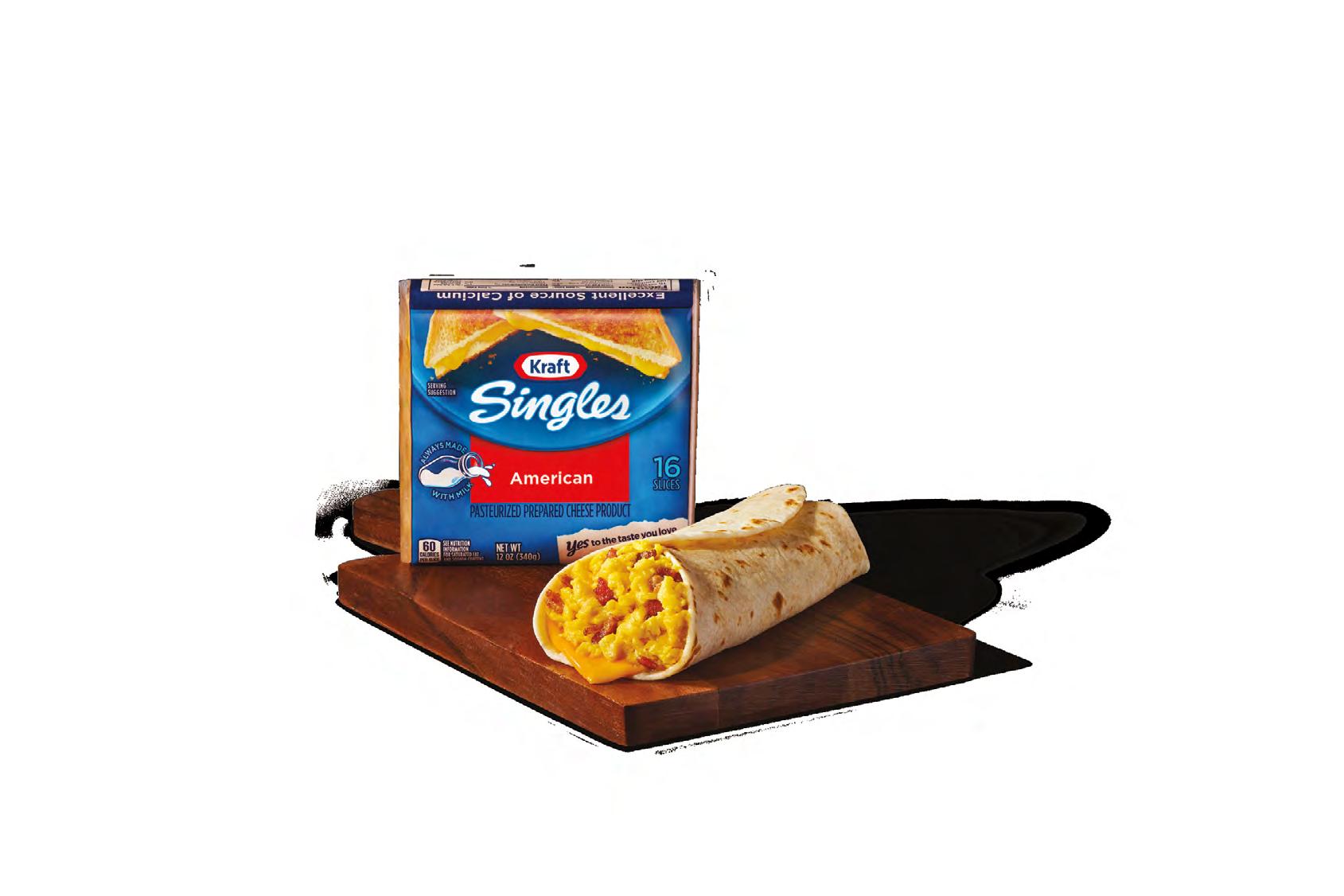

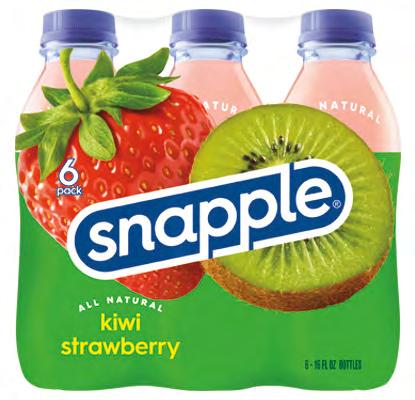



YOUR BODY’S NATURAL pH*

*approximately 7.4 pH



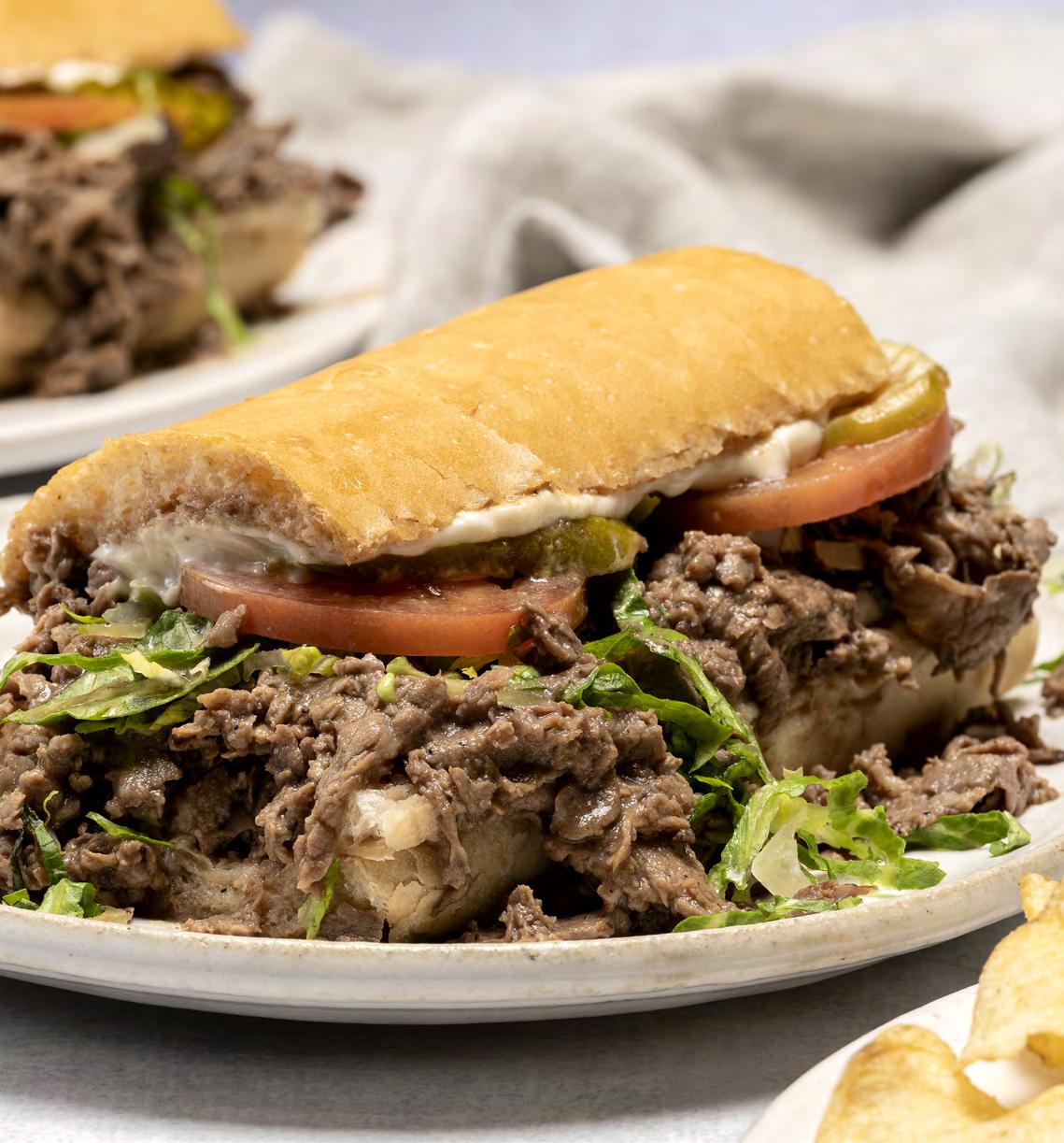
By some accounts, the history of the po-boy is straightforward. Benny and Clovis Martin, who had moved to New Orleans from their hometown of Raceland, came up with the famous sandwich to support striking streetcar workers in the Crescent City in 1929. Legend has it that, when one of the men would come into their restaurant, a cry would ring out: “Here comes another poor boy.” That man would be issued a sandwich on the house, and a culinary legend was born.
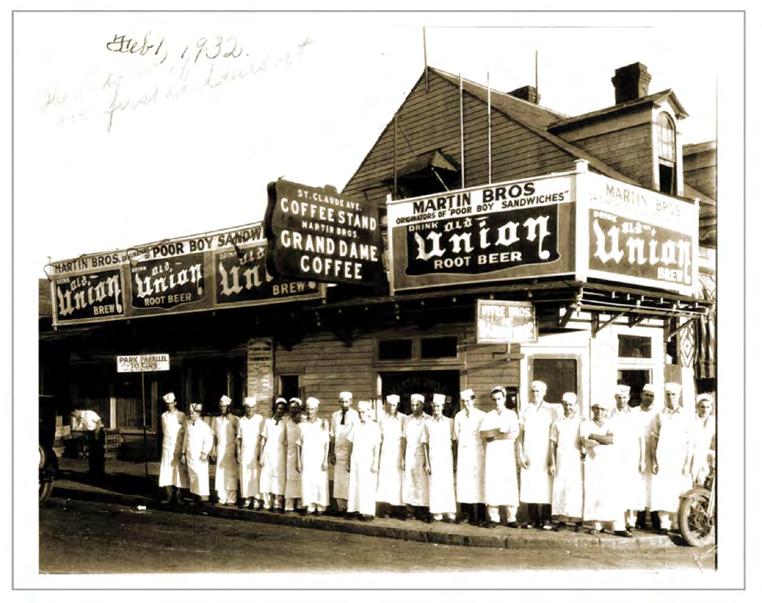
That’s the best-known story, anyway — or at least since the late 1960s, when it was first aired publicly, 40 years after the streetcar strike. Prior to that, the Martin brothers gave a different account of how they had created the po-boy, saying it had been named for the blue-collar truck farmers and other laborers who patronized their restaurant at the old French Market.
That’s just one of the complications with this official history. There’s also the fact that we know there were sandwiches very similar to the po-boy long before 1929. We have pictures and descriptions of them. Louis Armstrong, who moved away from New Orleans in 1922, wrote in his autobiography about buying po-boys with his earnings from delivering coal as
a teenager; jazz pioneer Sidney Bechet, who left New Orleans in 1917, gave a similar account in his own autobiography. (A note to language sticklers: The first specific published reference to the sandwich, from a New Orleans newspaper in November 1929, describes a “po-boy,” not a “poor boy,” being served to people in Plaquemines Parish.)
The peacemaker, now considered a po-boy variant, dates back to the 1870s. And then there’s this description from a New Orleans newspaper in 1851 of a to-go sandwich sold by a local saloon: “A big loaf of bread is ‘dug out’ — reserving a crust end as a stop — any quantity of delicious fried or broiled oysters is piled in; the top is neatly put on; and a gentleman can carry home his loaf and his ‘dozen’ — all hot — or have them brought home, for a lunch or a relish to dinner…”
But hey, I’m not here to start an argument. Maybe there was a popular food product known as a po-boy before the Martin brothers began slinging sandwiches in the late 1920s, but it would have lacked the most important ingredient: the po-boy bread created by John Gendusa’s bakery and supplied to the Martins starting in 1929. Without that bread, with a sublime crust and billowy soft inside, a sandwich is just a sandwich.
So, while it may be fair to say the Martin brothers didn’t singlehandedly create the po-boy, they certainly perfected and standardized it, and they made it famous. They recognized the marketing possibilities afforded by the po-boy name, and they made sure it stuck. What is now recognized around the world as a po-boy comes directly from them. So the next time you bite into a po-boy, remember that you’re tasting a piece of history.
It’s a story that has all the trappings of a Hallmark made-for-TV movie, Louisiana style: Two rival po-boy shop owners battle it out in a fierce competition to see who makes the best version of their signature creation and eventually (spoiler alert!) fall in love. And while the plot might sound like something dreamed up by a softhearted Hollywood writer’s room, it’s the real, honest-to-goodness way that Justin Kennedy of Parkway Bakery in New Orleans and Becca Murphree of Olde Tyme Grocery in Lafayette began their life together. And it all started — as so many good tales do — with a sandwich.
“In 1929, Benny and Clovis Martin, former streetcar conductors, retired and opened a grocery store and coffee stand on North Peter Street, right at the head of the French Market, called Martin Brothers Coffee Stand. When the Great Depression hit the country, New Orleans was really impacted through the streetcar workers. Those guys weren’t getting paid, so they went on strike,” explains Kennedy. “So,
Benny and Clovis said, ‘Look, you come to our coffee stand, show us your badge and we’ll feed you; we’ll feed our poor boys.’
P-O-O-R B-O-Y-S.”
There was one big issue with feeding so many people with one loaf: It needed consistency from beginning to end.
“What made [the po-boy] different from just a regular French bread sandwich is that the French bread baked at the time was wide
in the middle and skinny on the end, so when you had the soup line with guys trying to get their sandwich, the person on the end would get a little skinny piece [of sandwich] and the guy in the middle would get a big fat piece,” Kennedy recalls. “John Gendusa, whose family is still in business today at the bakery on Mirabeau Street, solved this problem by coming up with a 36-inch loaf consistent from beginning to end: the poor-boy loaf. It caught on and got really popular. Parkway was one of the places that started baking that consistent loaf. Then we started making po-boys and calling them po-boys. I have pictures of two guys sitting out front at the restaurant in 1929 when a po-boy was 10 cents!”
Fast-forward 87 years to 2016, and po-boy shops are scattered in neighborhoods not just across New Orleans, but all of Louisiana and the Gulf Coast, including Olde Tyme Grocery in Lafayette, which has built up a devoted local following for its delicious sandwiches and familial, convivial atmosphere since opening in 1982. Kennedy, who started working at Parkway at 18 and has devoted the last 20 years to the business, was running day-to-day operations at the legendary po-boy stalwart when a national competition crossed his radar — along with
Po-boy shops are a tapestry, weaving together the ins and outs of daily life in cities, towns and wide spots in the road across Louisiana with an ease of connection that would be impossible to replicate if they were uprooted and moved elsewhere.
this little shop two hours west that he’d never heard about.
“USA TODAY put a competition poll out back in 2016 to see who had the best po-boy in Louisiana through how many votes each place received. At first, I said, ‘No, I don’t want to take part in that. I have too much to worry about.’ But then I didn’t want us to be dead last in the competition, so I started getting into it. I swear, it was like running a political campaign: getting all your friends involved, reminding your family to vote every day. I was on the local news. Before our staff punched in, we had it set up to where they had to vote! I’m not saying it was all legit, either: Being from New Orleans, people know how to hustle and vote, and I was getting votes any way I could. It wasn’t just from natural customers, I’ll tell you that.”
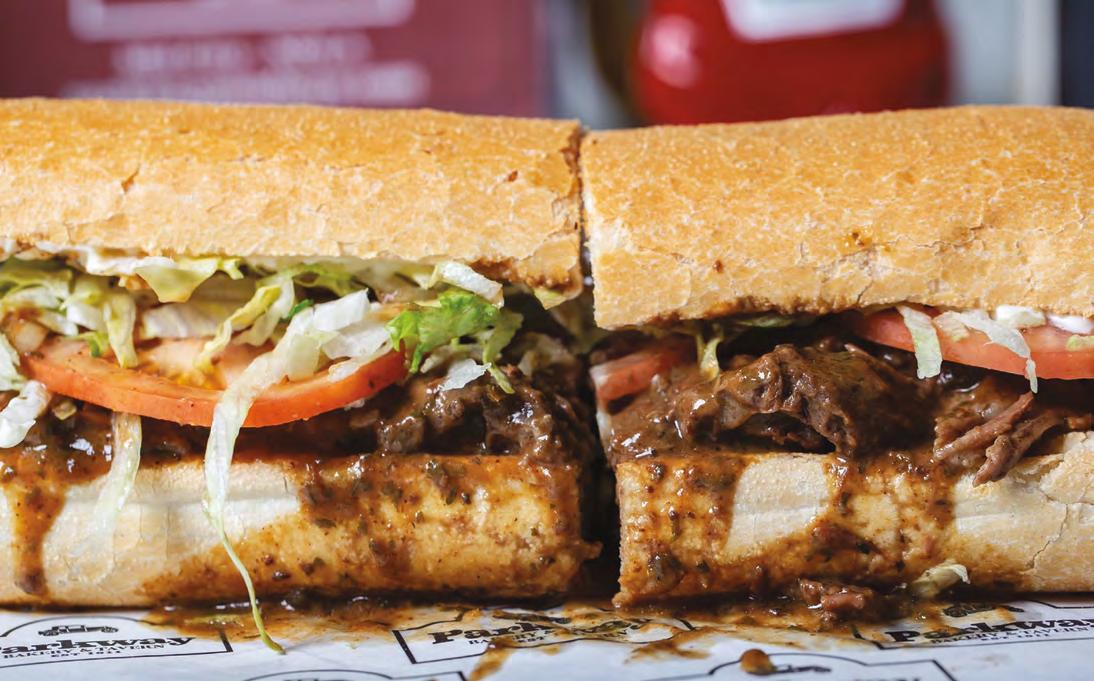
Parkway was holding steady toward the top of the po-boy competition ranks when, all of a sudden, a serious competitor emerged: Olde Tyme.
“Knowing all that I was doing to get votes — reminding customers, posting on social media, getting business partners, putting signs up, QR codes at the restaurant, all kinds of craziness — there was this place called Olde Tyme Grocery in Lafayette that
 Photo by Rush Jagoe
Photo by Rush Jagoe
was getting more [votes]. All of a sudden, they’d be in first, and you could see it live, too! That’s what made it fun. They jumped to number one, and they were holding at one, and I’m thinking at the time, ‘Lafayette’s the country, right? How’s this country place beating us?’” Kennedy laughs. “I know better than that now — it is definitely not the country. We even went undercover to check the place out, and it was just like Parkway: a nice, busy po-boy shop. It started to turn into a little battle between the two of us. They got wind, because when I saw they were winning, I was like, ‘Well, if you can’t beat them, join them; whatever they’re doing, we’re going to do!’ I ended up pulling it off, and Parkway got first place with a week left. I don’t think I would do that again, but I’m glad I did it that time, because I met my wife.”
After going tit for tat in such an immersive, intense po-boy battle, Kennedy and the Parkway team decided to make a visit to Olde Tyme in Lafayette that was a little less, well, sneaky to meet the family who gave them a true run for their po-boy money. “We went and visited the [Murphree] family at Olde Tyme, and they’re a beautiful family. I met Becca, who’s a beautiful girl, but when you notice beauty, you don’t just ask them out or nothing like that. So, that never happened. I remember my aunt, because I was single at the time, doing ‘the nudge’ on the way home, because aunts are always trying to set you up, like, ‘Huh? What about her?’ I said, ‘What am I going to do? Come up here and ask her out? That ain’t happening.’ So, I kind of forgot about the whole thing, and went back to New Orleans.”
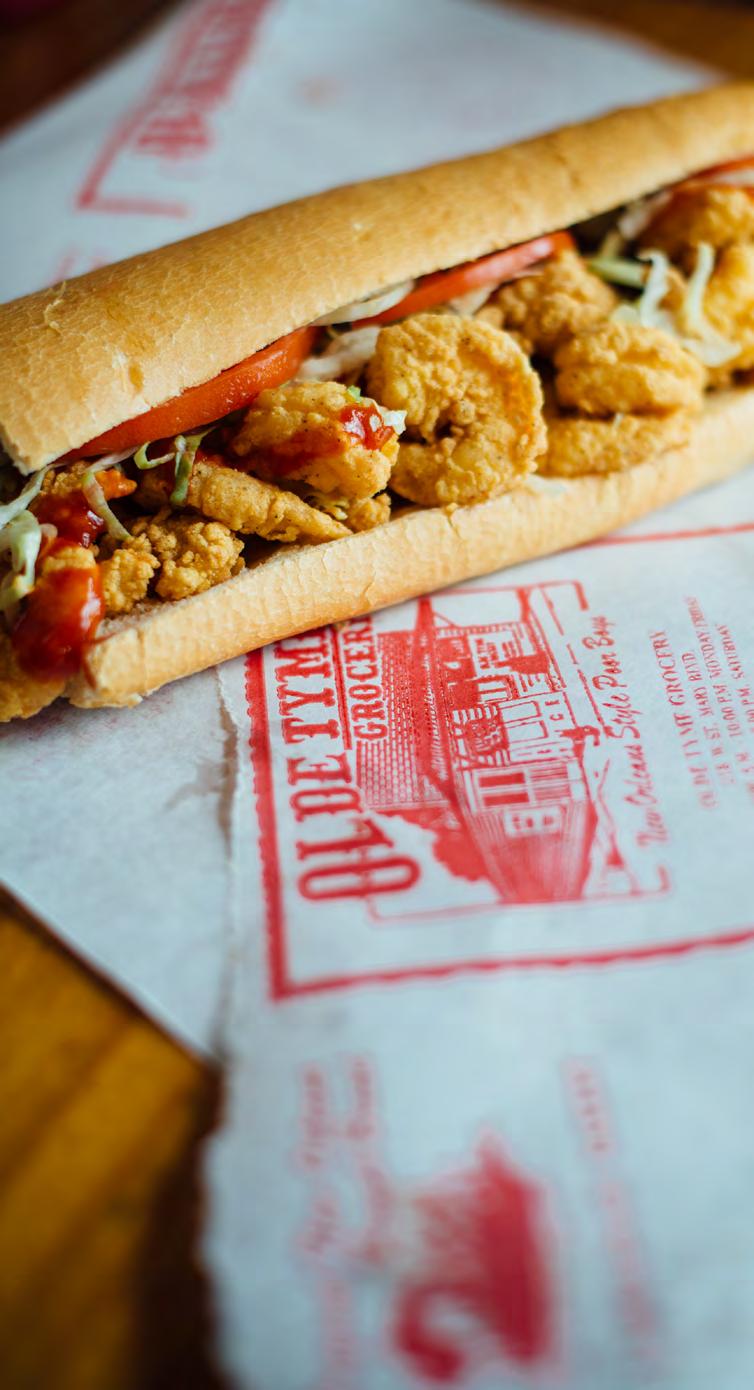
After the nail-biter of a competition, Kennedy kept loosely in touch with the Murphree family, bouncing ideas around about the sandwich business. By 2020, they were trading tips and tricks for navigating the day-to-day of restaurant operations during the early stages of the COVID-19 pandemic, when Becca called Justin out of the blue: She wanted to visit Parkway to see if it would be the right spot for the Krewe of Iris to hold a future luncheon.
“I told her, ‘That’s fine, but I’m on unemployment. We’re closed. When we open, I’ll give you a call!’” Justin chuckles, remembering the era of his “COVID beard” and no-shave days. After two-and-a-half months, Parkway officially reopened in May 2020, and ringing up Becca was at the top of Justin’s
list. “I called to tell her we’d be opening on a Friday, and by golly, she was there on Saturday morning all dressed up and stuff. I can’t blow no smoke. When I saw her, I knew why she was there. We weren’t even having Mardi Gras the next year! I quickly got the hint, asked her out, and on our first date, I took her to Biloxi on Old Highway 90 and we had lunch in Bay St. Louis — a nice little drive.”
By August 2021, Justin knew the relationship was getting serious, and decided to propose with Lake Tahoe, California — a place he’d first visited with Hogs for the Cause team members — as the sweepingly scenic, romantic backdrop. Life, however, had other plans.
“When we got to Lake Tahoe, the first day was nice, but by the second and third days there were wildfires all over California, and Lake Tahoe is just a basin, so all the smoke went over the mountains and fell into the lake so you couldn’t even see your hands in front of your face. It was crazy. So, my original idea to propose on a boat was canceled. Then, toward the end of the trip, Becca’s coughing, I’m kind of coughing, and we’re coughing a little heavier, and we’re thinking it’s the smoke — but we both had COVID. I ended up putting the ring in a medicine bottle and leaving it on the side of the bed. In hindsight, that started up the ‘in sickness and in health’ part of marriage real quick!”
Becca and Justin married in January 2022 at the Grand Hotel in Point Clear, Alabama, during a three-day celebration packed with family, friends — and only one po-boy. The groom’s cake was decorated to resemble a hyper-realistic shrimp po-boy, dressed, with papers from both Olde Tyme and Parkway peeking out from underneath the sandwichshaped cake.

Since the wedding, the couple’s commitment to their respective family restaurants hasn’t wavered, with both Becca and Justin still clocking plenty of overtime while commuting between their two po-boy havens down (of course) Old Highway 90. “I’m still a New Orleans resident; she’s still a Lafayette resident. We don’t know what we’re going to do just yet. She works the restaurant business just like I work it — it’s still 50-plus hours per week!”
The couple is also expecting a baby who, without a doubt, will grow up with a deep appreciation for the pedestal-like
place that po-boys hold in nourishing the people who make Louisiana’s communities so rich. (It’s also not difficult to imagine that the kid’s first words might be, “Dressed or undressed?”) “I think home base for the kid is going to be Lafayette, because she has more family surrounding her over there than I do in New Orleans, but this kid is going to be entrenched in New Orleans culture and Lafayette culture. It’s going to be neat for my kid to see both these places. It’s going to be a well-rounded Louisianan!”
And what a colorful childhood — filled with heart-bursting love of place — that will be. Po-boy shops are a tapestry, weaving together the ins and outs of daily life in cities, towns and wide spots in the road across Louisiana with an ease of connection that would be impossible to replicate if they were uprooted and moved elsewhere.
“If I had to go work in a hotel or whitetablecloth restaurant or something like that, I wouldn’t do it. I’d only run Parkway Bakery — that’s it,” says Justin. “You go to these nice white-linen restaurants and look, they’re beautiful, but there’s only a certain type of person who can afford that. You’re not going to get everybody going in there. Not everybody feels comfortable going in there! Also, not everybody feels comfortable going to eat at a corner store. But a po-boy shop, it attracts all walks of life: eight to 80, young and old, all ethnicities. You’ll have people sitting at the bar together, and one guy could be a millionaire and the other person could be someone who can barely afford that sandwich, and they’re striking up a conversation.”

It would be simple to imagine that memorable sandwiches are the reason po-boy shops keep their tables packed from morning to night, but Kennedy knows it’s more than that — it’s the people.
“You have to have good food to attract people to your restaurant, but that ain’t the reason I’m there. I like it because it’s the heartbeat of the city. I’ve seen old-timers who died 15 years ago who would tell stories about New Orleans you wouldn’t believe. I’ve seen little kids sitting on their mom and dad’s laps who are now doctors! I’m getting to that age where you’re start to see life happen in front of you. That’s what Parkway is. I can see the city of New Orleans every day without leaving the store.”
 Courtesy Olde Tyme Grocery
Courtesy Olde Tyme Grocery
One might assume a top-quality po-boy has to come from a sit-down establishment — or at least a specialty shop. It’s true that you can get a mighty fine sandwich at a real restaurant, but you can also find po-boys worth a special trip at convenience stores, gas stations and dive bars across the Gulf South and beyond, often offered at bargain prices.
It’s no coincidence that the early years of the po-boy coincided with the start of the Great Depression, when the American people had to pinch pennies, and the mobility revolution facilitated by the widespread adoption of the automobile. In the 1920s and 1930s, people needed cheap food that they could take from one place to another.
Convenience has always been a key part of any sandwich’s success, and you might think of it as a defining characteristic of the po-boy. In the Deep South, the po-boy was a pioneering fast food, developing in New Orleans before arriving in places like Biloxi, Mobile, Pensacola, and beyond, long before the drive-thru hamburger joint. Many a po-boy puts together a protein (meat or seafood), vegetables (lettuce and tomato), a starchy carbohydrate (the bread) and maybe even dairy (cheese) in a sturdy package. It’s really an all-in-one meal, built to travel in a way that is equaled by few others native to the region.
In the days before cellophane, Styrofoam and cardboard food packaging, a po-boy could be assembled, hot or cold, then wrapped in a sheet of butcher’s paper and secured with a piece of tape. The sandwich could then be tucked under an arm, stuffed into a bag or simply taken outside to be unwrapped and consumed on the spot.
That practicality has served the sandwich well throughout its history. The first known specific published reference to the po-boy, from November of 1929, describes a scene outside the courthouse in Pointe a la Hache, downriver from New Orleans. During a break in a high-profile trial, journalists, lawyers and onlookers went to a nearby lunch stand and ordered sandwiches to go — not to sit down and eat inside a restaurant. “Presently, the tree-shaded courthouse lawn was dotted with groups gnawing at the huge sandwiches New Orleans knows as the ‘po-boy sandwich,’” wrote the New Orleans States
Another description of the po-boy in its infancy, from a magazine published by the state Department of Conservation, details how young men from New Orleans would catch the old Smoky Mary train on Elysian Fields in the 1920s and ride out to Milneburg, a party town largely built on piers over Lake Pontchartrain. The men would grab food and drink before hopping aboard, armed with “three huge schooners of beer and three large ham or cheese
poboys (sic),” a package deal that cost them a grand total of just 15 cents at the old train station at Chartres Street.
Today, going to a convenience store or gas station for a po-boy may be the closest thing to the original po-boy experience. To maximize your pleasure, look for places that do a lot of business. That means that there is a lot of demand for the product — a good sign — and it also translates into fresh ingredients and sandwiches assembled on the spot. If you’re not sure how long the fried shrimp
has been sitting out or when the lettuce was sliced, feel free to ask. The people who make po-boys at mom-and-pop stores are proud of their quality, knowing that word of mouth goes a long way toward making or breaking a business’s reputation.
My experience is that fried shrimp and fried oyster po-boys are particularly well-suited for transportation but, with perhaps a few exceptions (such as a sloppy debris-filled roast beef po-boy), the contents of almost any po-boy will survive for hours.
Some quick-stop po-boy spots have turned the sandwich into an art form. Here are some excellent ones to try:
Today, going to a convenience store or gas station for a po-boy may be the closest thing to the original po-boy experience.
Kellie’s carries all the classics. No frills. None needed. Try the “Kellie’s Special” with roast beef, ham and cheese. Better grab some napkins. Save half for me?
“That’s the place to go,” says my girlfriend, and she knows what she’s talking about. It’s inside a gas station, and there’s always a line. By the time it’s your turn to order, your mouth will be watering and you’ll know exactly what to get. You can’t go wrong with anything on the menu, but because it’s Grand Isle, you might as well get a seafood po-boy.
This gem has carved out its own niche, presenting a “dressed and pressed” po-boy that will leave you impressed. There are also locations in Gulfport and Ocean Springs. My advice is to try them all. Rinse. Repeat.
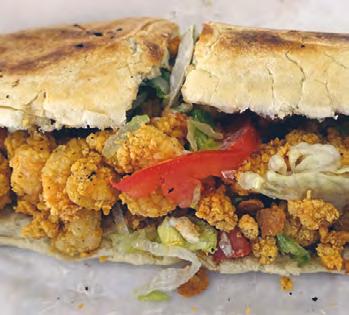
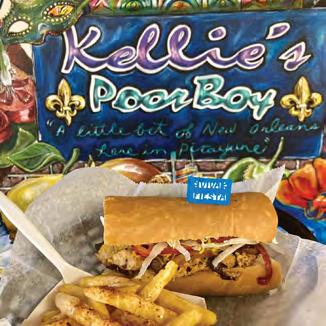

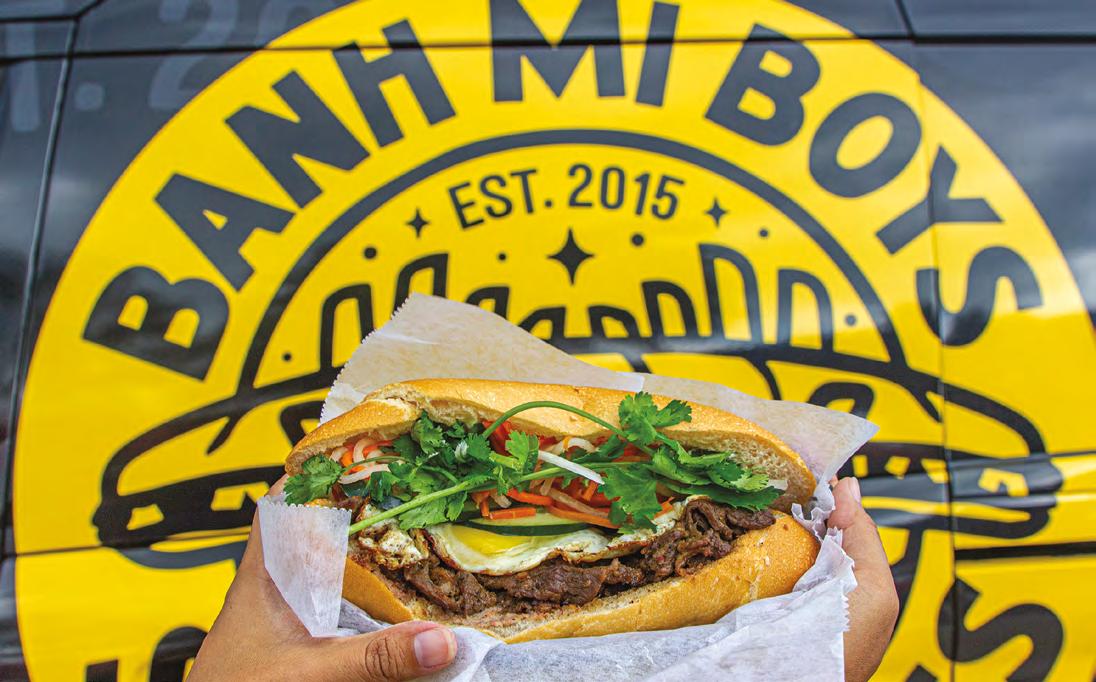
This flagship location sits right next to a gas station. It has both bánh mi (a Vietnamese sandwich that resembles the po-boy in shape and in function) and traditional po-boys, in all the flavors.
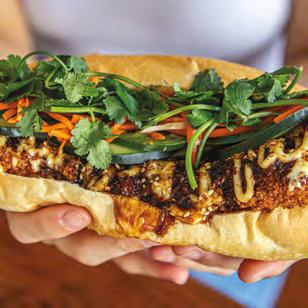 Courtesy Jo-Bob’s Gas & Grill
Courtesy Banh Mi Boys
Courtesy Fayard’s Courtesy Kellie’s Poor Boy Express
Courtesy Jo-Bob’s Gas & Grill
Courtesy Banh Mi Boys
Courtesy Fayard’s Courtesy Kellie’s Poor Boy Express
At Pepperidge Farm, we have been honing and perfecting our chosen craft for generations, and our bakers care deeply about what that means. It’s the little things that make food taste special. We believe in doing things right, and we just happen to love it.






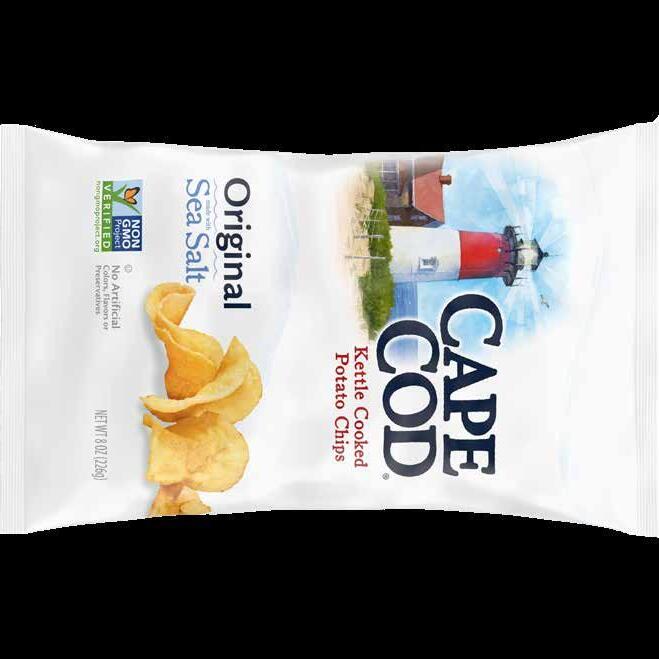



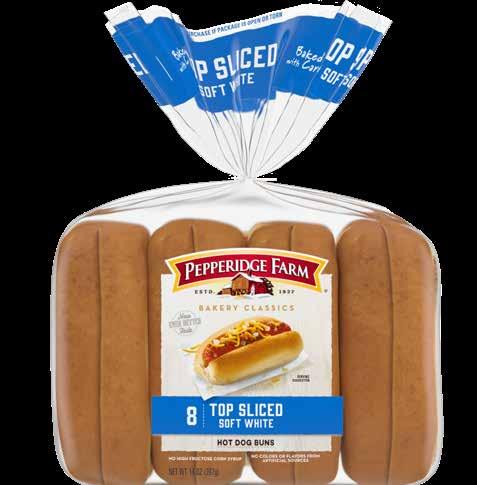



We have a long standing tradition of producing high quality, great tasting pork. Our products are fresh, tender and juicy, and we’re sure to exceed your expectations.
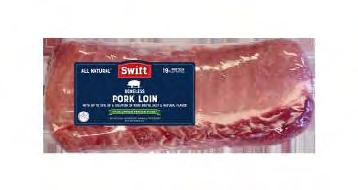



Scan for Recipes!


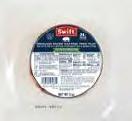


WE ARE A PROUD PARTNER OF ROUSES MARKETS










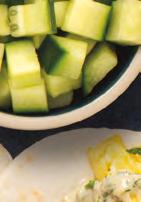



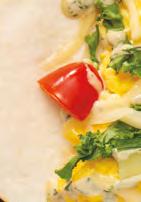










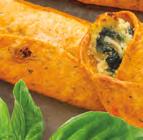





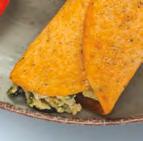



























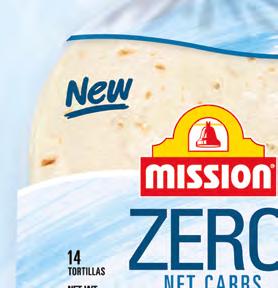











There is a specific joy that’s found in snacking on a bánh mì sandwich, whether you’re grabbing one from a strip mall in New Orleans East or picking up breakfast from a food cart on a winding, cobblestone street in Ho Chi Minh City. Unlike so many makers of between-the-bread creations that rely too heavily on a sweeping smear of condiments or stacks on stacks of meat to make them delectable, the Vietnamese know that sandwiches — just like any fine-dining dish or high-end cocktail — need balance. This often means a rainbow’s worth of colorful vegetables — including pickled carrots, stark-white julienned daikon and red-hot chile slivers — adorned with a drag through the garden of fresh herbs like cilantro, and nestled in a bed of buttery mayonnaise and pork sausage, meatballs, ham or chicken that’s been stuffed into a delicate, flaky baguette.
But the bánh mì isn’t just a decadent, thoughtful sandwich: It’s a holistic picture of Vietnamese history in a single bite. The ingredients that make up the “bánh” (bread) and “mì” (wheat) reflect Vietnam’s colonial history, specifically the intersection of French colonialism and local Vietnamese ingenuity. While the French introduced two staple building blocks of the bánh mì to Vietnam, the baguette and liver pâté, the Vietnamese masterminded their own version of the baguette using rice flour, due to wheat’s exorbitant cost as well as French gatekeeping of the delicious (but expensive) bread. The reimagined baguette proved to be an ideal vehicle for an on-the-go bite for workers, and shop owners responded in kind by adding a balanced meal’s worth of nutritious, sustaining filling to the portable snack.
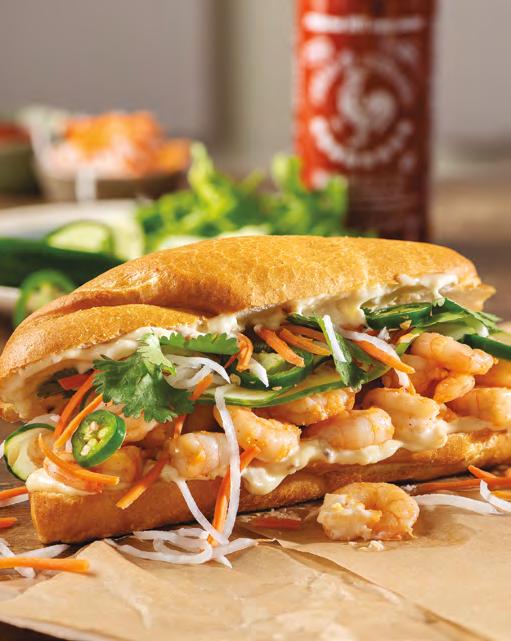
“My father’s eighty-something-year-old friends recall that around the early 1940s, Saigon vendors started offering bánh mì thi nguoi, an East-meets-West combination of cold cuts stuffed inside baguette with canned French butter or fresh mayonnaise, pickles, cucumber, cilantro and chile,” writes Andrea Nguyen in her 2014 book, The Banh Mi Handbook: Recipes for Crazy-Delicious Vietnamese Sandwiches . “Somewhere along the line, the term bánh mì came to signal not only bread but the ubiquitous sandwich.”
Mass emigration in the wake of the Vietnam War has seen the banh mi become synonymous with Vietnamese cuisine, as sandwich lovers the world over have become devotees of the bánh mì’s marriage of crunch and tang. The Vietnamese poet Nguyen Đình Chieu wrote in an 1861 poem that people “splitting sweet wine, gnawing bánh mì” was a common sight in Vietnam in the mid-19th century and now, in the 21st century, this merry act is replicated across the globe on a daily basis, cementing the sandwich’s place as a culinary icon.
ARROW-CIRCLE-RIGHT Bánh mì were mostly found at Vietnamese-owned restaurants, groceries and convenience stores serving Vietnamese communities in New Orleans East and on the West Bank before Katrina hit in 2005. As the city rebuilt, Vietnamese restaurants opened in new parts of town. Today you can find bánh mì in restaurants across New Orleans, and on menus all over the Gulf Coast. This one is from Trinh “Lilly” Vuong’s eponymous restaurant, Lilly’s Cafe (in the Lower Garden District of New Orleans), which is a favorite of many at Rouses Markets.
The bánh mì isn’t just a decadent, thoughtful sandwich: It’s a holistic picture of Vietnamese history in a single bite.
ARROW-CIRCLE-RIGHT
We make our own ham, turkey and roast beef po-boys at most stores. The bread is baked fresh daily, and we use our own fresh produce and deli meats, which we slice in-house. Our sandwich wraps, sandwich wedges and King’s Hawaiian sliders are also made in-house.

Makes 6-8 servings
We bake our New Orleans-style French bread loaves in-house; they are perfect for po-boys. And when the bread gets a tiny bit stale, they’re the perfect main ingredient for our old-fashioned bread pudding. Where available, we also get French bread from local bakeries
4 cups whole milk
4 tablespoons (½ stick) unsalted butter, plus more for greasing pan
1 tablespoon vanilla extract
1 cup granulated sugar
1 teaspoon cinnamon
Pinch ground nutmeg
1 cup granulated sugar
Pinch salt
4 eggs, beaten
1 loaf stale French bread, cut into 2-inch cubes (about 5 to 6 cups)
Preheat oven to 350°F.
In a small saucepan over low heat, warm milk, butter, vanilla, sugar, cinnamon, nutmeg and salt. Continue cooking just until butter melts; let cool.
Meanwhile, grease a 4- to 6-cup baking dish with butter or nonstick spray and fill it with the cubed bread.
Add eggs to cooled milk mixture, and whisk thoroughly to incorporate. Pour mixture over cubed bread and gently stir to coat. Let sit for 5 to 10 minutes before baking so that the bread can absorb some of the liquid.
Place pan in preheated oven and bake for 30 to 45 minutes, or until custard is set but still a little wobbly, and edges of bread have browned. Remove from the oven and serve hot or warm.

Love at First Bite, the catering business run by Walker’s Southern Style BBQ in New Orleans East, began selling their cochon de lait po-boy at the New Orleans Jazz & Heritage Festival in 2001. Now you can get this warm shredded pork po-boy with cold cabbage and a homemade horseradish sauce at festivals all over Louisiana. You can also order it at their restaurant. The Galley in Metairie is home of the whole soft-shell crab po-boy served at The New Orleans Jazz & Heritage Festival since 1977.
Crabby Jack’s in Jefferson is JacquesImo’s owner Jack Leonardi’s lunchtime spot. The duck po-boy is slow-roasted, pulled duck served with a brown-gravy
duck debris. It is a festival favorite. The Yakiniku po-boy from Ajun Cajun in New Orleans is a thin-sliced ribeye steak and onion sautéed in garlic sauce, topped with mozzarella cheese, and dressed with pickled carrots and zucchini and Japanese Kewpie mayonnaise. It’s as if a Philly cheesesteak and a bánh mì had a baby. Creole hot sausage po-boys from the Vaucresson family have been part of every New Orleans Jazz Fest since the first one in 1970. Vaucresson Sausage Co. returned to the Seventh Ward in New Orleans nearly two decades after their building was destroyed in Katrina.
Italian sausage, ground beef and hot sausage mixed into a single, griddled patty. Sammy’s Food Service & Deli on Elysian Fields in Gentilly is known for its hot sausage and smoked sausage po-boys, along with the Ray-Ray, a combination of Southern fried chicken, grilled ham and Swiss cheese. Their roast beef is cut thick and served on slightly toasted bread. Li’l Dizzy’s in Treme serves a hot sausage po-boy using links, not patties; it is made in-house. Dempsey’s in Baton Rouge has some of the best gumbo around. At Dempsey’s Seafood & Steak in Kiln, Mississippi, the hot sausage po-boy has grilled spicy sausage patties on French, dressed to order.

The Judge Bosetta at Johnny’s Po-Boys in the French Quarter features

The best roast beef po-boys are judged by how many napkins you go through. The roast beef at Darrell’s Famous Poboys in Lake Charles is one of the messiest — and one of the most delicious. At Parkway Bakery in New Orleans, they toast their French bread until the interiors are just browned — it makes the po-boy sturdier — before adding lettuce, tomatoes, pickles, mayonnaise, roast beef and gravy. Over at Parasol’s in the Garden District, they toast their po-boys whole. R&O’s Restaurant in Bucktown’s offering was voted best roast beef po-boy in New Orleans by a local newspaper. It’s made with oven-toasted sesame bread and it’s deliciously sloppy, with tons of house-made gravy.
The Napoleon House in the French Quarter may be best known for its muffaletta, but don’t sleep on the messy roast beef po-boy. It’s a 10-napkin versiont. At Frady’s One Stop Food Store, a Bywater landmark, you can

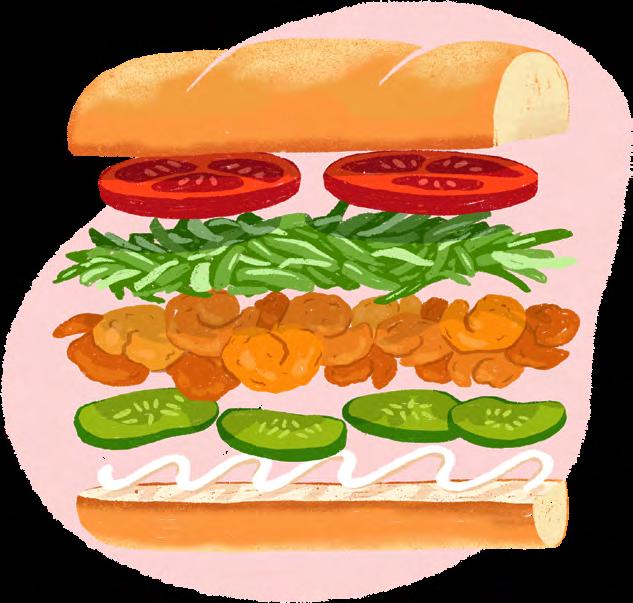
have your roast beef on sliced bread, French bread or a bun. Up to you.
The roast beef po-boy at Rocky & Carlo’s in Chalmette is topped with the same brown gravy that’s very popular on the restaurant’s veal cutlet, stuffed peppers and, of course, their famous baked macaroni.
KY’s Olde Towne Bicycle Shop in Slidell makes one of the best roast beef po-boys in The Dell. The circa 1902 building has a great history, too.
Bear’s Restaurant in Covington is a North Shore institution, and roast beef is the top seller there and at its sister sandwich spot, Bear’s at Gennaro’s in Old Metairie.
Jefferson Parish has so many great roast beef po-boys, like those at Radosta’s in Metairie and Chateau Orleans in Marrero. Short Stop Poboys on Transcontinental in Metairie has been serving po-boys since 1966. They have over 30 different types of po-boys, but their debris-style roast beef is not to be missed. The roast beef po-boy at World Deli on Clearview Parkway at West Esplanade is another must-try. If you can wait till Friday, Mo’s Pizza in Westwego has a Fridayonly roast beef po-boy special.
The roast beef po-boy at Pirate’s Cove in Pass Christian is drenched with brown gravy, dressed with mayonnaise, lettuce and tomatoes. The gravy for the famous roast beef po-boys at Lil’ Ray’s in Gulfport is made in-house.
kinds of mustard (Creole and yellow), mayonnaise and pickles. Add Swiss cheese and you have a Ralph.

The Darrell’s special at Darrell’s Famous Poboys in Lake Charles is piled high with ham, turkey, roast beef and your choice of cheese, then drenched in their homemade roast beef gravy; ordered it dressed with their homemade jalapeño mayonnaise.

was recently ranked the best shrimp po-boy on onlyinyourstate.com
The fried seafood, including shrimp and oysters, at Bozo’s in Pascagoula is perfectly fried. The shrimp po-boy features plentiful portions of the freshly fried seafood.
Kenny’s Seafood in Slidell serves a serious shrimp po-boy. If you can pass up the shrimp boulettes at Bayou Blue PoBoys in Houma — come on, you can do it — order the shrimp po-boy. You won’t regret it!
There’s a reason tourists (and locals) line up around the block for the Ferdi special at Mother’s Restaurant in New Orleans. The Ferdi is baked ham, roast beef, debris, and gravy, dressed with shredded cabbage, two

Parkway Bakery has been making po-boys since 1911 and, while it is known for its roast beef, the shrimp is right up there alongside it. Domilise’s and Guy’s Po-Boys are two of Uptown New Orleans’ best choices for fried shrimp poboys, although you can’t go wrong with gravy-soaked roast beef at either eatery. Guy’s Chef/Owner Marvin Matherne also serves up great daily specials. Adams Street Grocery & Deli is a hidden gem, with generously portioned shrimp po-boys at a great price.
The shrimp po-boy at Olde Tyme Grocery in Lafayette has been called “Acadiana’s gold standard” for shrimp po-boys. In nearby New Iberia, the fried shrimp po-boy at Bon Creole Seafood is generously overstuffed — and delicious.
The owner of Rocco’s New Orleans Style Po-Boys & Cafe in Baton Rouge opened his first po-boy shop 25 years ago on West Chimes Street just outside of LSU, so he has his bona fides. His fried shrimp po-boy, a neighborhood favorite,


Don’t just think fried for shrimp. Spahr’s Seafood serves a blackened shrimp po-boy that’s dressed with fried green tomatoes, lettuce mix and “creolaise.” (They also make a great fried shrimp po-boy.) Seither’s in Harahan has a blackened shrimp with avocado. And the BBQ shrimp po-boy is the signature po-boy at Liuzza’s by the Track near the Fair Grounds in New Orleans.
Felix’s Fish Camp in Spanish Fort, Alabama (near the town of Daphne) on Mobile Bay enjoys some of the most scenic sunsets around. But it’s the seafood po-boys — including a fried crawfish tail po-boy — and the crab soup that keep people coming back. Thin cornmealcrusted catfish stars among the takeout po-boys at Zimmer’s in Gentilly. The
Seafood Platter po-boy at Bon Creole in New Iberia holds fried shrimp, catfish, crawfish and oysters. And while the seafood muffaletta at Parran’s in Kenner, Metairie and New Orleans isn’t technically a po-boy, it does feature fried shrimp, catfish and oysters in a spicy homemade Cajun mayo. It’s hard to pass up the plate lunches at Rita Mae’s Kitchen in Morgan City, but the crab cake po-boy at this little house-turnedrestaurant is delicious.
area, is like a Philly Cheesesteak with provolone cheese and fried shrimp.


Casamento’s in New Orleans is famous for its oyster loaf on Texas-size toast. And Ye Olde College Inn, which is down the street from our Carrollton store, is a favorite for their onion rings and oyster loaf (which is pretty much just an oyster po-boy). But it’s Lower Alabama where you find the most seafood loaves. The fried shrimp and oyster loaves at both Lulu’s in Gulf Shores and the Dew Drop Inn on Old Shell Road in Mobile are excellent.

The Surf & Turf at Darrell’s Famous Poboys in Lake Charles has roast beef and sautéed shrimp that’s been cooked in their roast beef gravy and homemade butter sauce. They give you plenty of napkins, and you’ll need them. You can’t miss with the fried shrimp with roast beef debris at Domilise’s or Parkway Bakery. Go for it and order it dressed, with cheese.
American Market — affectionately known as AM Mart — is an LSU student favorite. Get a po-boy, Zapp’s chips and a drink for under $10 at this corner store on Nicholson and Lee. Dressed here means mayonnaise, mustard, lettuce, tomatoes, pickles and salad dressing.
The Peacemaker, a combination of fried shrimp, swiss cheese, roast beef gravy and debris, at Bevi Seafood in New Orleans is fantastic. Acme Oyster House (multiple locations) tops fried oysters and fried shrimp with Tabasco-infused mayo. And the Steak Bomb at Po-boy Express, with several locations in the Baton Rouge

If you’re a meat-and-potato person, get the French fry po-boy topped with house-made beef gravy at R&O’s Restaurant in Bucktown.

BBQ chicken confit, glazed pork belly, and ham & pimento cheese are just some of the unusual offerings at Killer Poboys, which has two locations in the French Quarter.
At Julien’s Po-Boys in Lafayette they boil the ham for their Ragin Cajun po-boy in crab boil, then top it with melted jalapeño cheese, mayonnaise and lettuce. Chef Collin Cormier and his team at Pop’s Poboys in Lafayette, put their own creative spin on po-boys like Banh Banh Shrimp, Crawfish Boil Sausage and Red Bean Falafel.

You can smell the French bread baking when you walk into our Rouses stores. Our po-boys are piled high with freshly sliced turkey, ham or roast beef, with or without cheese, and dressed with fresh lettuce and tomatoes.
The po-boy purveyors of the Gulf South serve a vast variety of sandwiches. You’ve got your classic roast beef, often soaked in a bath of gravy. Fried shrimp and softshell crab are enduring favorites. Then you’ve got your hot sausage po-boy, you hamburger po-boy, or your basic sliced ham or turkey and cheese. Some places even serve a po-boy made with French fries and meaty gravy. And there are any number of combinations and lesser-known variants.
But for me, the king of po-boys will always be the fried oyster version. It’s always been my favorite. There’s really something special about flash-frying fat, salty Gulf oysters, sealing in their flavor, and then piling them into a fresh po-boy loaf, with thinly sliced lettuce and tomato, pickle slices and a smear of mayo. Sometimes I add a dash of hot sauce, but more often, I don’t have the patience to tweak something that’s already this close to being perfect. I know I’m not alone. And, in fact, the earliest known predecessors to the modern po-boy have one thing in common: their star ingredient, the mighty oyster.
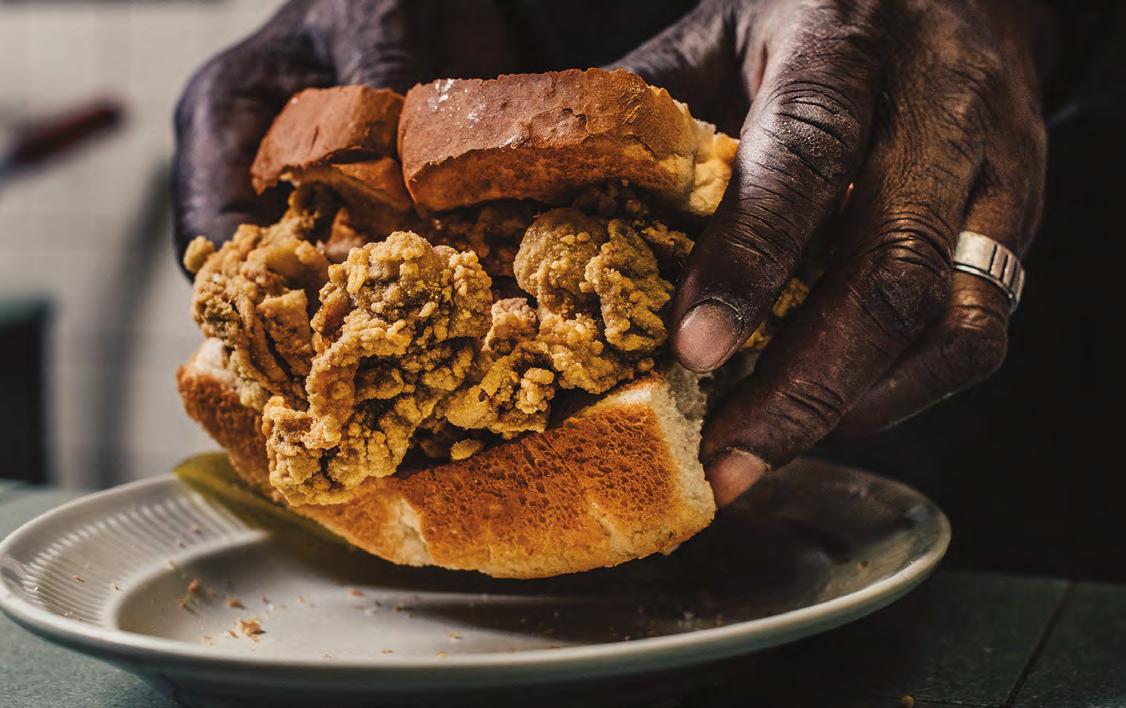
Oysters are magical mollusks. They filter water. They create reefs that help slow coastal erosion and that minimize storm surge during hurricanes. In Louisiana, the oyster industry brings in hundreds of millions of dollars every year. And oysters have been a delicacy on the Gulf Coast for as long as there have been people here. These bivalves helped make our cuisine famous, and they are a mainstay on the menus of restaurants
from Texas to Florida, and everywhere in between.
They also have a long history in sandwiches. The oyster loaf dates back to at least to the 1700s, when an edition of Eliza Smith’s The Compleat Housewife, the first cookbook published in America, provided this convoluted yet compelling recipe: Take a quart of middling oysters, and wash them in their own liquor; then strain them through a flannel, and put them on the fire to warm; then take three quarters of a pint of gravy and put to the oysters, with a blade of mace, a little white pepper, a little horse-radish, a piece of lean bacon, and half a lemon; then stew them leisurely. Take three penny-loaves, and pick out the crumb clean; then take a pound of butter, and set on the fire in a sauce-pan that will hold the loaves, and when it is melted, take it off the fire, and let it settle; then pour off the clear, and set it on the fire again with the loaves in it, turning them about till you find them crisp; then put a pound of butter in a frying-pan, and with a dredging-box dust in flour till you find it of a reasonable
thickness, then mix that and the oysters together; when they are stewed enough, take out the bacon, and put the oysters into the loaves; then put them into a dish, and garnish the loaves with the oysters you cannot get in, and with slices of lemon; and when you have thickened the liquor, squeeze in lemon to your taste; or you may fry the oysters with batter to garnish the loaves.
The oyster loaf’s first known mention in New Orleans came in an 1851 newspaper ad that described hollowing out an entire loaf of bread, to fit in more oysters that would go into a loaf that had simply been cut in half lengthwise. But the interpretation of the modern oyster loaf depends on where you go. Many places simply call their oyster po-boy an oyster loaf. Others use sliced bread for a sandwich that they also call an oyster loaf.
Confusing things further is the peacemaker moniker. That name, a marketing gimmick, was first applied to an oyster sandwich served on a long loaf of bread in New Orleans. We’d recognize it as a grandfather of the po-boy today. The concept behind the peacemaker was that, when women were prohibited from patronizing the saloons of the city, they might be displeased that their husbands spent a great deal of time in those saloons. But their ire would be placated when their husbands came home with a piping hot oyster po-boy — it would bring about domestic peace.
Over the years, though, that definition has changed. Some places now call a sandwich that is half oyster, half shrimp a peacemaker, the thinking being that it offers a compromise to the discerning diner who has difficulty deciding between the two.
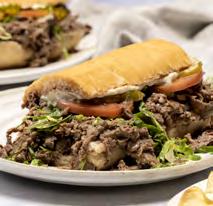
It can be confusing. There’s probably a punch line in development for a joke about an oyster po-boy, a peacemaker and an oyster loaf walking into a bar. But
The months of February, March and April are prime time for large, salty Gulf Coast oysters. Serve them fried on French bread, Texas toast or thick sandwich bread.

8 slices thick-cut white bread
2 tablespoons unsalted butter, at room temperature
Vegetable oil, for frying Rouses Fish Fry Mix
3 dozen large oysters, shucked, not rinsed Mayonnaise
Shredded lettuce, for serving Sliced tomato, for serving Sliced dill pickles, for serving Hot sauce
Lemon wedges, for serving
Preheat the broiler. Lightly butter the bread on both sides and set aside.
Line a baking sheet with paper towels. In a large, heavy-bottomed pot fitted with a deep-fry thermometer, add enough oil to reach 4 inches up the sides of the pot. Pour Rouses Fish Fry Mix into a shallow bowl. Working in batches, dredge the oysters in the seasoned mix, pressing it onto the oysters to cover them completely, then shake gently to remove any excess. When the oil temperature reaches 370°F, add the oysters in batches and cook, stirring occasionally with a slotted metal spoon, until oysters are golden brown, about 2 minutes. Transfer the oysters to the paper towels on the baking sheet as they are finished cooking, and continue cooking the remaining oysters. While the last few batches of oysters are frying, broil the bread, turning once, until golden on both sides, 30 seconds to 1 minute per side.
Spread 4 of the toast slices with a tablespoon of the mayonnaise. Top with warm fried oysters and dress with lettuce, tomatoes, pickles and hot sauce. Serve with lemon quarters.
Makes 6 servings
For roast beef
1 (3- to 4-pound) chuck roast
Salt and freshly ground black pepper, to taste 2 dried bay leaves
2 tablespoons olive oil or vegetable oil
1 packet ranch dressing mix
2 tablespoons tomato paste
1 packet dry onion soup mix or au jus gravy mix
½ cup (1 stick) salted butter
For po-boys
1 loaf French bread, cut in 6-inch segments
1 or 2 large tomatoes, thinly sliced
Shredded lettuce
Sliced dill pickles
Mayonnaise
Generously season both sides of roast with salt and pepper. Heat vegetable oil in a large skillet over medium-high heat until hot. Add chuck roast and sear on each side for 5-6 minutes each, until well browned.
Carefully remove roast from the skillet and transfer to your slow cooker. Sprinkle the ranch dressing mix and onion soup or au jus mix over the top of the roast. Add the butter, tomato paste and bay leaves.
Cover with the crockpot lid, and cook over low heat for 8 hours or more. Use two forks to shred the meat. Discard any fatty pieces.
Spread slices of French Bread with mayonnaise. Top with warm roast beef and dress with shredded lettuce or cabbage, tomatoes and pickles.
ARROW-CIRCLE-RIGHT Debris — pronounced day-bree — is the name for the bits of meat and crusty char that fall from a beef roast as it is cooking or being sliced and are mixed in with the pan’s drippings.
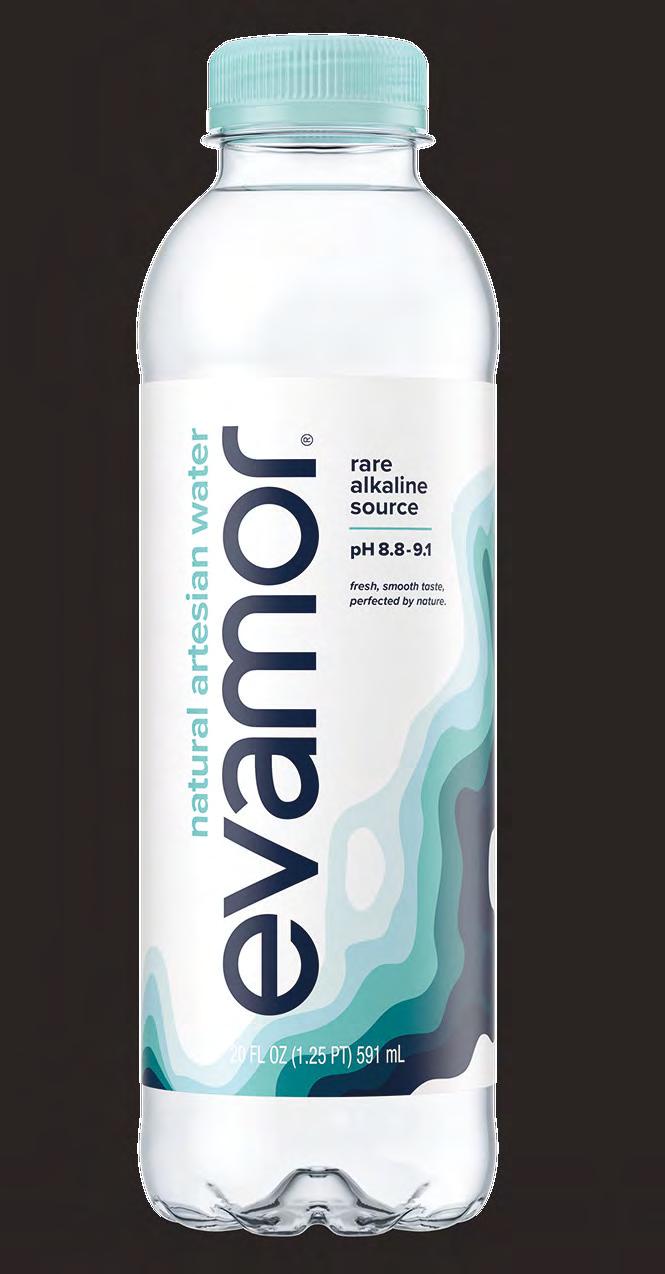


Born in New Orleans – a city that knows flavor – Blue Plate Mayo’s simple recipe using oil, vinegar and only the egg yolks brings out the delicious in everyone’s favorite comfort foods. Use the rich and creamy taste of Blue Plate to dress up a fried green tomato sandwich on toasted bread, whip up the perfect potato salad for gumbo, mix a spicy marinade for an oven roast – and more.
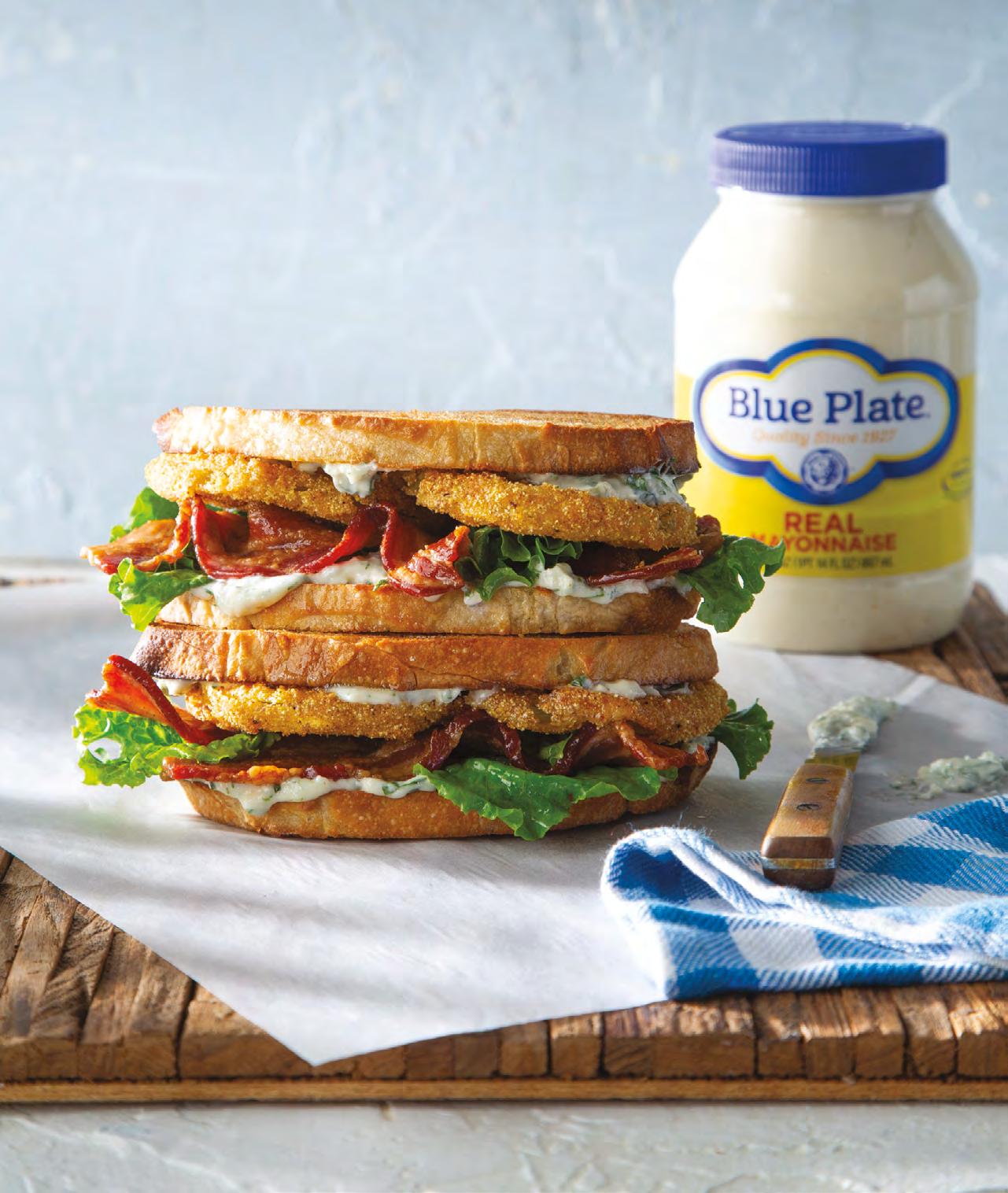
BLUEPLATEMAYO.COM





When Rouses asked me to write about whether or not a hot dog is a sandwich, I knew I was going to make some enemies. I am still getting hate mail from those of you who like ranch dressing on pizza (which is the culinary equivalent of walking around barefoot in the mall) and those upset by my verdict on waffles versus pancakes (waffles are needy pancakes that require you to buy an appliance you’ll use twice a year). Rouses shoppers have strong opinions about food. But unless your opinion is the same is mine, you are wrong, sadly, and so, here goes: Hot dogs are not sandwiches. Hamburgers aren’t sandwiches, either. Before you begin your letter-writing campaign, however, hear me out. We are going to do a deep philosophical exploration of what is a sandwich. If, at the end, you disagree with me, you will still be wrong, but at least you will be better informed about how wrong you are.
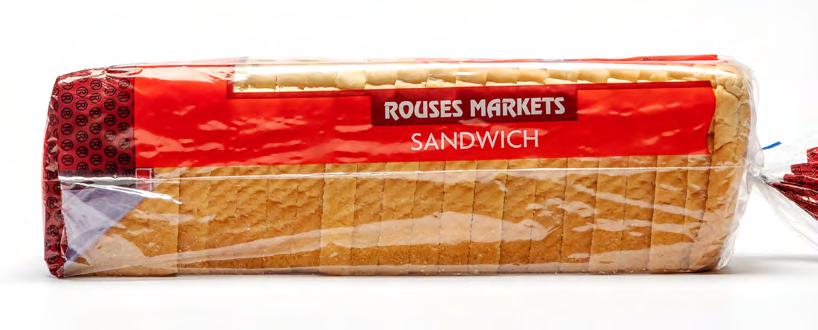
First, we should probably talk about where sandwiches come from. The sandwich as we know it goes back to John Montagu, the 4th Earl of Sandwich, who distinguished himself from the three earlier earls by being a devoted gambler who did not want to stop playing cards to have dinner. While at the tables, he thus ordered a meal of meat between two slices of toasted bread, which did not require a fork to eat and allowed him to play without getting his cards greasy. His gambling addiction is the world’s gain. The food became the rage of London — people ordered “the same as Sandwich” — and it remains the greatest, if not only, culinary gift that England has ever bestowed upon the world. (Considering its other gifts are weird meat pies, and steak and kidney pudding, it’s not like there was much competition.)

Yes, people had come up with the notion of a sandwich before Montagu, but it was called (really) “bread and meat,” and sometimes “bread and cheese.”
Fast-forward to today: Let us consider the definition of a sandwich according to the U.S. Department of Agriculture (USDA), which ought to know. A “closed sandwich,” it says, is made of “at least 35% cooked meat and no more than 50% bread.” An open sandwich, meanwhile, is “at least 50% cooked meat.” First, I should say that there is no such thing as an open sandwich. An open sandwich is a slice of bread with things on top. Avocado toast is an open sandwich, which is self-evidently not a sandwich. Moreover, a peanut butter and jelly sandwich, which, I will argue, is most definitely a sandwich, would not be according to the USDA due to its lack of meat. Their definition is a mess, and until it is corrected, the USDA should be defunded immediately. Our tax dollars deserve better.
Okay, so the government got it wrong. No surprise there. But what about the dictionary? It’s not every day that I can cross swords with the USDA and Merriam-Webster, but seemingly from thin air, the dictionary authors decided that a “split roll” could also be included in the sandwich description, which of course is wrong. I’m going to declare for the world that a sandwich requires a minimum of two (2) slices of bread. More is fine. You can make a club sandwich with three slices of bread, no problem. (A Big Mac, however, which also contains three parts of bread, is not a sandwich. It is a hamburger, as we will discuss.) But one slice of bread is not a sandwich. It’s a roll-over, maybe. Or it’s a toast of some sort. If nothing else, consider that a single slice of bread with toppings, folded over, would allow one of those giant slices of overrated New York pizza to be considered a sandwich. Ladies and gentlemen of the jury, according to the dictionary definition, by the simple act of folding it in half, it would be magically
“Sandwiches may only be born of bread intended to be sliced for multiple servings.”
transformed into a cheese sandwich with tomato sauce. We know that not to be true, and can disregard it with no further consideration.
I propose that a sandwich is defined not by the ingredients delivered, nor by the mere presence of bread, but by structure. Like a hologram or fractal, every single element of a sandwich must spiritually conform to, and contain the nature of, that which is sandwichness.


Furthermore, sandwiches may only be born of bread intended to be sliced for multiple servings . What do I mean by this? Consider the hamburger bun. It is bread, we agree. And it must be sliced, I admit (a top half and a bottom half). However, a hamburger bun is intended only for a single hamburger. (Or cheeseburger, which is also not a sandwich. Or the aforementioned Big Mac: again, not a sandwich.) Sandwiches are inherently a communal food. By my obviously correct definition, a hamburger is therefore not a sandwich.
“But David,” you say, thinking you have found a loophole, “What if I eat a hamburger patty on slices of Bunny Bread?” First of all, if you are doing that, it means someone at the barbecue forgot to bring buns, and you are probably pretty sad about the whole thing. Secondly, the tragedy is compounded due to the sad fact that no one at least had Evangeline Maid. And while tragic, that hamburger
not quite a hamburger. Rather, it is a mistake — an apostasy, even — with insufficient sandwichness. A sandwich is more than a mere delivery device of things to your mouth. All of the ingredients, together, must cohere elegantly as a sandwich.
Slices of bread are more than mere vessels for — to name a popular topping — peanut butter and jelly. They must instead be intrinsic parts of the whole. No one would lick a spoonful of peanut butter, then shove the spoon into a jar of jelly and add that to their mouth, chewing the two into magenta goo. The texture would be all wrong. The nature of the thing would be abominable. In the case of peanut butter and jelly especially, bread brings not only order, but balance. The two condiments are already in harmony, but they are incomplete, a mere half of a barbershop quartet. Only with the addition of two slices of bread do you achieve coherence. As proof, consider that no sane person would buy hot dog buns, spread peanut butter on one half, and jelly on the other, and eat… whatever you might call that. Even though the ingredients would be the same on a molecular level to a peanut butter and jelly sandwich, it would not be a sandwich.
You see that this discussion is not the result of a mind gone mad, but a mind staving off madness.
Now, consider a muffaletta. It has a bun, yes — a very large one. Within its confines
eat olive salad and cold cuts on their own (though it does sound tasty, I must confess). Bread is required — again, for balance. But — and here is the important part for these arbitrary rules I have defined — a muffaletta is cut into multiple wedges intended for several people (or one very, very hungry person with a cast-iron stomach). By its very nature, it meets the threshold of sandwichness. A muffaletta is, therefore, a sandwich.
We must, while we dwell on New Orleans cuisine, consider another edge case: the po-boy. Long have I meditated on this one. Can a po-boy truly be a sandwich? It is composed, usually, of two slices of bread, and that bread generally feeds multiple people (or at least, is made to be divided into multiple servings). What of its constituents? Here is where I struggle. The ham and cheese ingredients of a ham and cheese po-boy can be eaten on their own, as anyone who has ever ordered charcuterie or eaten Lunchables can attest. The fried shrimp of a fried shrimp po-boy, obviously, can be eaten on its own, and if we include the thinly shredded lettuce that usually dresses it, yes, it would make a tasty shrimp salad, no bread needed. Therefore, a po-boy is not a sandwich. Its po-boyness is simply too strong. (Consider that no one would ever order a peanut butter and jelly po-boy, which is also proof of the sandwichness of a PB&J.)
The above example challenges the
and cheese together is a snack. Meat and cheese on slices of bread is a satisfying meal, as the 4th Earl of Sandwich recognized in the 18th century.

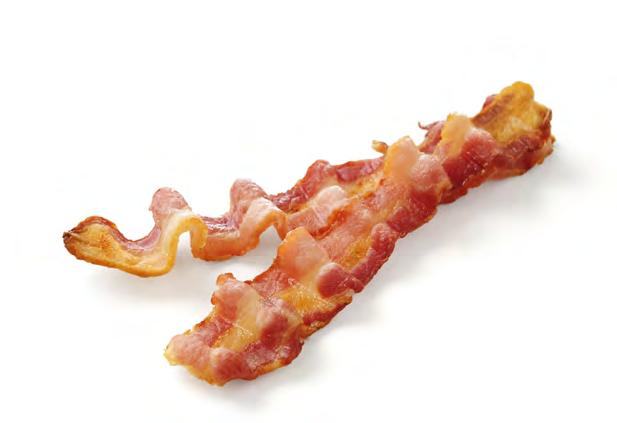
What about an ice cream sandwich? I think you already know the answer. First, the chocolate cookie-ish cake part is not bread, and second, ice cream is ice cream. Nice try, dessert menu, but not on my watch. (They do have harmony, though, I will give you that…)
Which brings us, at last, to the hot dog. As discussed, a hot dog bun, though bread, yes, and though sliced (though not completely in two, making it ineligible to be a sandwich ex vi termini), it is still intended only for a single hot dog eaten by a single person, or if you are a parent, a single person, but the parent can finish whatever the child does not. But also, the actual hot dog itself — the meat part — is too weird for a sandwich. Like a po-boy, a hot dog is its own thing entirely, and not a subset of sandwich. The fact that I said “hot dog” — which is a meat — and you imagined the bun immediately, attests to how integrated and perfect it is as its own entity.

It is, however, a burrito. But that is a much longer discussion.
ARROW-CIRCLE-RIGHT We’d put this spicy chicken sandwich up against any chicken sandwich out there. Yes, it’s that good. Juicy chicken is coated in our buttermilk fire breading and fried in small batches in our zero trans-fat oil so the chicken stays juicy, while the breading is tender yet crispy. It’s served on a brioche bun with our creamy chipotle ranch sauce and cool dill pickle slices. We are known for our fabulous fried chicken, and this is the best fried chicken sandwich anywhere, and our best-selling sandwich overall.

ARROW-CIRCLE-RIGHT The classic club sandwich is a triple-decker made with three slices of toasted white bread, turkey or chicken, bacon, lettuce, tomatoes and mayonnaise, and cut into quarters. The club is said to have originated at the Saratoga Club House, known now as the Canfield Casino, in upstate New York, in 1894.

We sell our own classic fish sandwich during Lent. Our very popular version features a crispy fish filet patty with American cheese and tartar sauce, served on a soft bun.
The Gulf, Orange Beach
ARROW-CIRCLE-RIGHT The fried grouper sandwich at this outdoor-only restaurant on the beach is as stunning as the views.
Fresh off the Boat, Orange Beach
ARROW-CIRCLE-RIGHT Blackened Gulf fish dressed with arugula, Roma tomato, pickled red onion and signature Beachin’ Sauce on a toasted brioche bun. You can also get it fried or grilled.
Cosmo’s Restaurant & Bar, Luna’s Eat & Drink and Cobalt, Orange Beach
ARROW-CIRCLE-RIGHT Grilled, blackened or fried fish served on a toasted sourdough bun with lettuce, tomato and red onion.
Tacky Jacks, Orange Beach, Gulf Shores, Fort Morgan
ARROW-CIRCLE-RIGHT Grilled, blackened or fried fish served on a toasted buttery brioche bun.
Fisher’s Dockside Orange Beach
ARROW-CIRCLE-RIGHT Cornmeal fried Gulf fish with jalapeño citrus coleslaw served on a brioche bun.

Flora-Bama Ole River Grill, Orange Beach
ARROW-CIRCLE-RIGHT Lightly breaded Gulf fish on a soft sesame seed bun served with house-made tartar sauce. They also offer a grilled mahi-mahi po-boy.
Sassy Bass, Gulf Shores
ARROW-CIRCLE-RIGHT The grilled grouper Reuben is served on grilled rye bread with sauerkraut, melted Swiss cheese and Thousand Island dressing.
The Steamer Baked Oyster Bar, Orange Beach, Gulf Shores
ARROW-CIRCLE-RIGHT You can get a great grilled mahi-mahi sandwich at this restaurant, which was voted a Top 3 Restaurant in Southern Living
ARROW-CIRCLE-RIGHT As far as meat in a can goes, you would be hard pressed to find something more famous than or as instantly recognizable as Spam. Spam was created by Hormel Foods Corporation to find a better use for pork shoulders. Bacon, ham, loin — one animal produces all those things. But the shoulder? People just weren’t buying them, and a sort of culinary Manhattan Project was convened. Hormel knew canned meats. Their first stab at it was in the mid-1920s, with — and this was its actual name — Hormel FlavorSealed Ham. This time, though, they would create the alpha and omega of aluminum-encased pig. The result? Spam. Spam? Spam.
Yeah, you’re probably wondering about that name. I mean, it’s better than “Flavor-Sealed Ham.” The guy who named Spam, Ken Daigneau, did so in a contest, and won $100 for his Shakespearean style etymology. Hormel always capitalizes the word in its entirety, and hints coyly that SPAM is an acronym.

“Pshh, everybody knows that!” you shout. “Spiced ham!”
— Wham, Bam, Mahalo Spam!, David W. Brown, Rouses Magazine, July-August 2020
If you somehow managed to create the most impressive and dazzling new thing in all the world, it would still only be the greatest thing “since sliced bread.”
For at least 30,000 years, bread has been the center of human civilization. It nourishes the body and, across cultures and religions, nourishes the soul. A country’s most fertile soils are called its “bread basket,” and the person who makes the money in a household is the “breadwinner.” The breaking of bread is the first act of solidarity between people. (The word “companion” derives from the Latin com, which means “with,” and panis, which means “bread.” Bread is the thing you eat with your friends.) In the Catholic Church, bread is consecrated as the literal body of Christ. In ancient Egypt, it was a form of currency. In 18th-century France, Voltaire said of his people that they need only “the comic opera and white bread.” If you somehow managed to create the most impressive and dazzling new thing in all the world, it would still only be the greatest thing “since sliced bread.”
Every civilization has independently discovered its own form of bread. It is life, and the reason we have thrived since the dawn of humanity. It is also a hyper-localized product. Regional soils nourish different types of wheat in different ways, and different water goes into the making of bread. This affects taste and texture when the dough rises and is baked. (It is one reason New Orleans po-boys are so distinctive — our water somehow yields a bread both fluffier and crisper. Have you ever ordered a po-boy in New York? It would be a war crime.) And because bread is of the Earth and of the local community, people have very strong opinions about their local brands!
In Louisiana, two of the most popular types of bread are Evangeline Maid and Bunny
Bread. The uninitiated think the two are the same, but an enthusiast will tell you in polite, but not uncertain terms, that it is time for you to leave. I will discuss the reason below.

Evangeline Maid bread was born over a century ago in the heart of Cajun country: in Youngsville, Louisiana, just outside of Lafayette. A baker named Joseph Huval had learned his trade in the Army during World War I, came home, and opened a little bakery for $50. Evangeline Maid was thus born. Indeed, it is a family affair. The slender maid that’s always been on its logo is a sketch of Joseph’s daughter, Mary.
And the logo isn’t the only thing that hasn’t changed. The recipe for the bread and the way it is made is the same as ever, only on a much, much larger scale. It is what the people of Acadiana grew up on, and what their kids will grow up on as well. (When I think back to my childhood, I only remember GIANT bread — I can still see it there, those big blue letters on a yellow bag. But GIANT brand it was not. Rather, it was Evangeline Maid; the large loaves were simply given a giant, well, GIANT label.)
Bunny Bread, meanwhile, is not a local bread per se, but everyone sure knows its trademark smiling rabbit on the bag of every loaf sold. The company was founded in 1925 by a trio of brothers — Amos, Arnold and Jack Lewis — who wanted to open a bakery in Illinois. Bunny Bread, as the world now knows it, came along 20 years later, and soon came to be as emblematic of the American Midwest as the wheat fields that yielded it.
Here is where it gets interesting, though. Bunny Bread is made fresh in regional bakeries, including — perhaps more famously even than its Illinois birthplace — in the city of New Orleans. Which means, for the discriminating Louisiana sandwich eater, the bread aisle at your local Rouses can be a flavor competition between Lafayette and New Orleans. After all, we take our food pretty seriously here.
It is worth recognizing that in addition to being great bakers, the Lewis brothers and Huval family were entrepreneurs. Bread was not always a grocery store staple, sliced perfectly and wrapped in plastic bags with twist ties on the end. A hundred years ago, women baked the bread in most family households. The idea of unburdening mothers of that responsibility was pretty
radical, with no guarantee of success. How recent is pre-sliced bread? Pop-up toasters were around before bread-slicing machines were invented.
In many ways, bread is like wine. The reason Italian food tastes better with Italian wine, and vice versa, is that the two were created in conjunction, from the same local terroir, by people with similar palates, flavor preferences and cultural backgrounds. Sometimes intentionally and sometimes subconsciously, chefs and winemakers work toward similar ends, adapting to each other, pushing each other and finding new ways of elevating each other. They achieve balance and harmony without even thinking about it.
In the case of bread, consider Evangeline Maid’s old-fashioned white bread. It is soft and fluffy and absolutely perfect for wiping your bowl after finishing a Cajun dish like gumbo, for which Acadiana is so famous. Did Joseph Huval set out intentionally to make the perfect mop for remnants of crawfish étouffée, or did he naturally come onto the solution because that is the kind of food we eat around here? It is probably a little of both.
If you thought the sometimes bitter rivalry between fans of differing breads was already intense, then brace yourself. Bunny Bread partisans and Evangeline Maid enthusiasts, I beseech you to show restraint and not hurl your pillowy soft loaves of enriched white bread at each other. Because — prepare yourselves for this — both brands are owned by the same company: Flower Foods, out of Georgia. In New Orleans, the bakery that makes Bunny Bread also bakes Evangeline Maid in Acadiana.

It was only a matter of time before two such great things would come together in peace and harmony. Long, after all, is the history
of bread — so long, in fact, that bread has not only been just for eating, either. Anything that has been around for several thousand years was bound to pick up a few extra uses along the way. I’ve already mentioned that it was once a currency in ancient Egypt. Before rubber erasers were a thing, balled-up bread was used to erase pencil markings. In the Middle Ages (and today as well, if you know where to look), bread was baked as the bowl for the meal eaten. This might even be how pizza was born, though the truth is lost in the sands of time. It might even have curative properties, packed as it is with micronutrients.
What is known for certain is that we all love bread. On average, an American will eat 53 pounds of bread per year. This is about the same weight as a mattress of a twin-sized bed which, yes, was the weirdest comparison I could find in my cursory Internet search. (A thousand dollars in quarters also weigh 50 pounds).
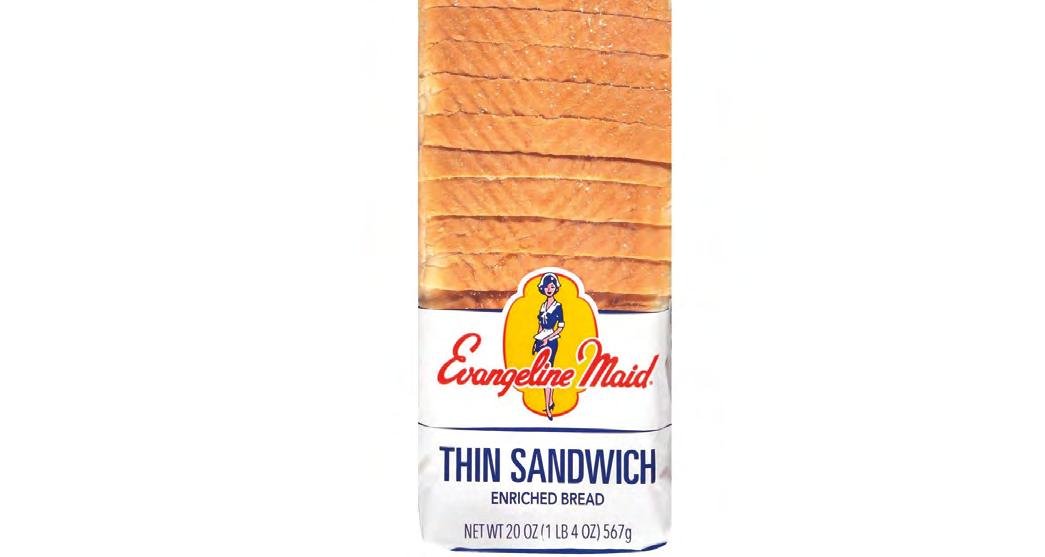
But the subject of lost truths and misconceptions brings us back to Evangeline Maid and Bunny Bread. Specifically, some people believe they are the exact same bread in different wrappers. But that just isn’t so! Evangeline Maid is made in a very specific way, and each loaf takes about eight hours from start to finish. It starts the way all leavened bread (that is, bread made with a rising agent) is made: with flour, water and yeast. Of course, unlike bread made at home, bread at the Evangeline Maid factory is prepared in higher volume. It takes about four hours for the big blob of dough to rise, at which point it is cut into loaf-sized portions; their old-fashioned loaves are also hand-twisted, just as they were in the days of Joseph Huval. From there, it is stretched and molded into the shape you know and love, and then goes into trays for baking. After that, it gets a brief trip to the oven, and when it comes out, it is ready to eat. Before it can get to the shelves of your local Rouses, though, it must first cool for an hour. It is then sliced, bagged and tied off.
Bread is everything in New Orleans, especially French bread — and with stale such bread being considered the best of all, because you can use it to make pain perdu. Po-boy bread can only be made in the city. (You could try to make it elsewhere, but it just wouldn’t work.) Even the traditional king cake is a kind of brioche — basically bread with a hint of sweetness, mixed with cinnamon and slathered in icing and colorful sugar.
So, if New Orleans prefers Bunny Bread, there has to be something going on there. In part it is the flavor and texture. It just goes right with Creole cuisine, and a big part of that is probably due to the water. Furthermore, it is perhaps because thousands of schoolkids — who probably had sandwiches made with Bunny Bread in their lunchboxes
— also took class field trips to the bakery in New Orleans, where they were probably given stickers of the Bunny logo.
On that note, if you’ve read this far about bread, I have a surprise for you, and it’s a doozy. Your bread contains a secret: The colors of twist ties on loaves of bread are not random. As a general rule (though, of course, your mileage may vary), blue twist ties mean the bread was baked on a Monday. Tuesdays get green twist ties. Bakers get Wednesday off, so there’s not usually a color associated with it. On Thursday, breads wear red while, on Friday, white is the order of the day. Finally, on Saturday, yellow twist ties are all the rage. (Sundays are also a day of rest.) All this helps shoppers know when the bread arrived on shelves.
When hurricanes come, there’s a reason those shoppers rush the bread aisle at their local Rouses, and clean out the Evangeline Maid and Bunny Bread. When hurricanes
are gone, there’s a reason Rouses Markets makes restocking bread a top priority. In part, it’s because sandwiches are easy to make when there won’t be power for a week or more. In part, it is because when we are left to evaluate the damage and begin to rebuild, if necessary, bread offers a spiritual nourishment perhaps unlike any other food. Maybe it is a trace ancestral thing. Thirty thousand years is a long time to eat something without it getting all wrapped up in our genetic makeup. But maybe it is just plain comfort. Bread means security. It means friends. It means family.
Today, on Facebook, Reddit, and all manner of social media and discussion board sites online, you can find dust-ups between the Evangeline Maid people and the Bunny Bread people. Have you ever wondered why? Or if ever there were a loaf of bread in the break room at the office, or you saw one sitting out at a friend’s house,
if it is somehow different than the obviously correct bread (whichever that is for you), didn’t it sting a little? Doesn’t it feel like you hardly know this person? Feel like maybe you shouldn’t know such a person? (I see a bread loaf with polka dots on it, and I’m out.)
The reason for this, I think, is beautiful, and speaks to the innocence of childhood and the memories of parents or grandparents, of a thousand packed lunches and PB&Js. We care about the bread we grew up on because that bread in many ways summarizes where we came from, what our values were and are, who we once were and who we want to be. And obviously, the giant loaves of Evangeline Maid bread are better than Bunny — for me, anyway.

ARROW-CIRCLE-RIGHT Pat’s King of Steaks, the oldest cheesesteak shop in Philadelphia, and Geno’s, a rival shop across the street that’s been competing with Pat’s for more than 50 years, are the best-known cheesesteak shops. But there are other friendly competitors, including Chubby’s and Dalessandro’s, and across-thestreet rivals, South Philly’s. The iconic sandwich is made with thinly sliced sautéed ribeye, griddled onions (optional) and melted cheese — usually Cheez Whiz®, though American and mild or sharp provolone are also acceptable — served on a long, crusty roll.
ARROW-CIRCLE-RIGHT Cheez Whiz is often confused with Easy Cheese, which is the cheese spread you spray out of a can. Cheese Whiz comes in a glass jar. It is found in the dairy aisle. The rich, flavorful, neonorange sauce was originally developed for the British market as a substitute for the melted cheddar cheese served on a piece of toast, called Welsh Rarebit. (The
original cheesesteak didn’t have cheese on it.) Later, provolone was added. When Cheez Whiz was introduced to America in the 1950s, Philadelphians switched from provolone to the meltier Cheez Whiz.
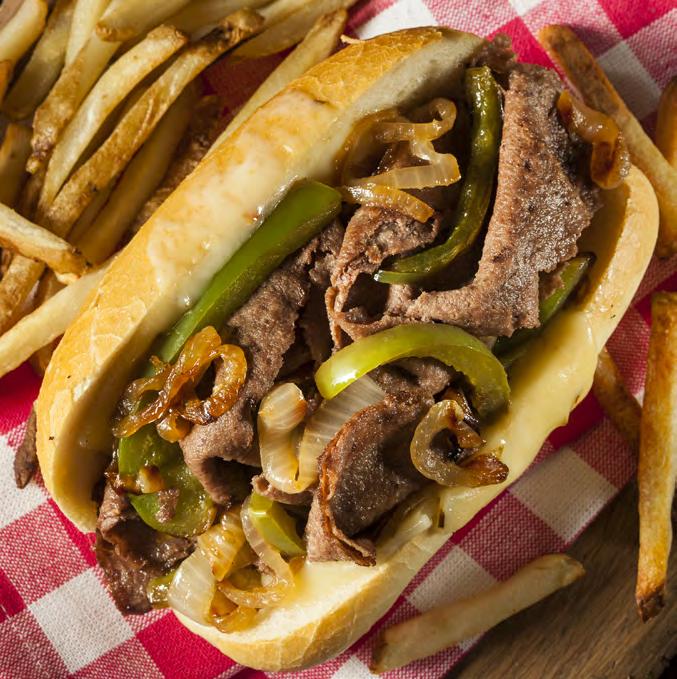
ARROW-CIRCLE-RIGHT A boneless ribeye is the best steak for a real Philly cheesesteak. It’s a naturally marbled steak, so it’s tender and has great flavor. One of the secrets to great cheesesteak is the thinness of the raw beef. Start with a very cold raw steak (a very cold steak stays firm, so it’s easy to slice). You can even put it in the freezer for a short bit, around 20 to 30 minutes, which will help it firm up and make it easier to thinly slice. With any steak cut, you should always slice against the grain, or across it, which means cutting against the direction that the muscle fibers run.
ARROW-CIRCLE-RIGHT Peanut butter as we know it today was dreamed up by eccentric cereal guru and nutritionist Dr. John Harvey Kellogg (yes, that Kellogg’s) in 1895 as a way to feed elderly patients with poor dental hygiene at the Battle Creek Sanitarium in Michigan. The health food paste made its official debut in 1904 at the St. Louis World’s Fair. Despite conflicting accounts about whether this version actually tasted good, there was no denying it was a hit with the curious, hungry masses. Fueled by frugality, the peanut-butter-as-superfood marketing trend would crystalize during the early 20th century, when Americans went, ahem, nutty for peanut butter as part of “meatless Monday” rationing during World War I. One 1908 ad from a now-defunct peanut butter company even went so far as to claim that “just 10 cents’ worth of peanuts contain six times the energy of a porterhouse steak.”
In truth, peanut butter might not be Popeye-eating-a-can-of-spinach levels of muscle-fueling, but by the 1920s, it was already on the path to ubiquity. Crosscountry shipping, shelf-stable storage and easy spreadability (no stirring required!) were made possible when partial hydrogenation technology was applied to the creamy concoction, followed by the advent of the wide-mouth lid and, finally, the arrival of crunchy peanut butter on the scene in the 1930s.
Spread the Word, Sarah Baird, Rouses Magazine, Summer 2022


ARROW-CIRCLE-RIGHT An Italian sandwich is made with cured meats (typically capicola, mortadella, salami and ham) and provolone cheese, and dressed with “the works” — lettuce, tomato, onion, a lot of olive oil and red wine vinegar, and pepperoncini peppers. You could also try it with our Rouses Italian Olive Salad instead of the vinaigrette and pepperoncini peppers.
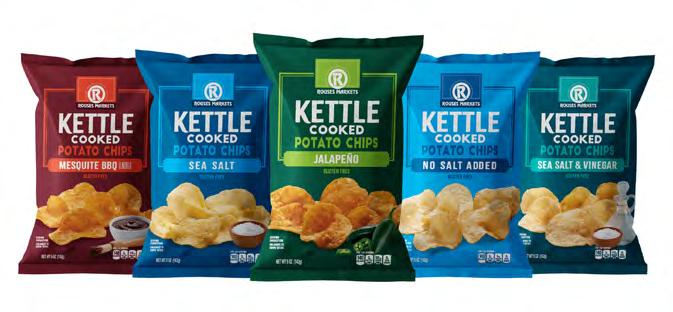
ARROW-CIRCLE-RIGHT If you love the crunch and flavor of kettle chips, then you have to try these! Our NEW Kettle Chips are made with real ingredients and are crunchy and bursting with flavor. They’re hand cooked in batches, and take longer to crisp. The result is an extra crunchy, thick texture, which is perfect for dips. Available in traditional and festive flavors.

ARROW-CIRCLE-RIGHT Your choice of potato salad is almost as personal as your choice of sandwich, which is why we have so many. Choose traditional, Southern-style yellow mustard potato salad or classic home-style potato salad with egg; creamy deviled egg potato salad with paprika; kicked-up Cajun potato salad; country potato salad with egg and a thicker cut of potato; loaded baked potato salad; or New Orleans-style with red potatoes, eggs and sweet pickle relish.

ARROW-CIRCLE-RIGHT Our crunchy Bread & Butter pickle chips are both salty and sweet. Our Atomic Spicy pickle chips have quite a kick. Both are great on sandwiches. But our bold, crisp, classic cut kosher dill spears are our most popular pickle. And we also have deli favorite Half Sour whole pickles


SEND A TEXT & JUMP INTO WHAT’S NEXT













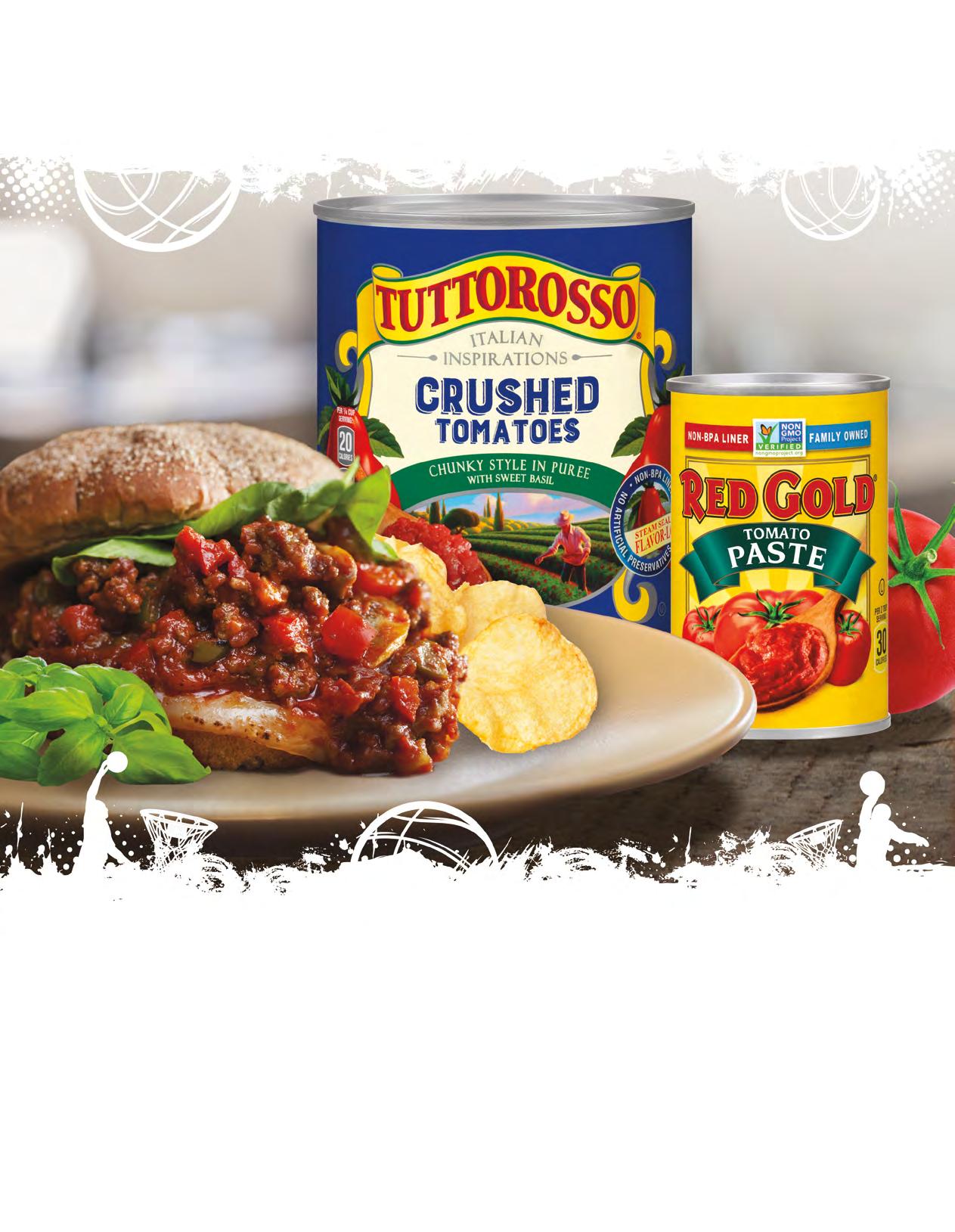

 By Susan Langenhennig Granger
By Susan Langenhennig Granger
In the pantheon of famous sandwiches, which New Orleans creation should get the highest pedestal? Is it the roast beef po-boy? The oyster loaf? The muffaletta? Just for argument’s sake, I’m going to throw out one more suggestion: the humble New Orleans finger sandwich. The sheer ubiquity of these bite-sized favorites should qualify them as a contender. In New Orleans — and all along the Gulf Coast — they’re served with a regularity that would raise eyebrows anywhere else in the United States.
Around the country, finger sandwiches, if you can find them, are a fussy business. Google the term, and you’ll get results for cucumber sandwiches and salmon toast points, the kinds of dainties found at a British afternoon tea service — not that there’s anything wrong with that.
But it’s not what we’re talking about here. In metro New Orleans, finger sandwiches are hardly fancy affairs laden with flavors. They are simple — downright modest — both in proportion and in ingredients. White or wheat bread, untoasted. Ham, turkey, roast beef, egg salad, tuna salad or chicken salad. A thin swipe of mayo.
You can eat them in two bites. Put out a tray, and they’ll be nearly gone by the time the wine is uncorked.

On the Gulf Coast, finger sandwiches are a prerequisite for any get-together, large or small, fancy or casual. At the finest of homes, they’re served on a silver platter with linen napkins, hardly amiss on a white tablecloth spread. On the parade route, they’re pulled from ice chests and perched on folding tables, perfectly sized to gobble down between passing floats.
And for popularity, they rival the po-boy in the mind-boggling number eaten per capita. Rouses stores last year sold 8.9 million finger sandwiches. That’s not a typo: 8.9 million, eaten at every type of life milestone: weddings, funerals, bridal showers, baby christenings. (If divorce parties were a thing, they’d no doubt show up there, too.)
You can even find them at the gas station. Danny & Clyde’s, the South Louisiana gas station/convenience store chain, offers finger sandwiches on its catering menu.
All of this begs a few questions: How did finger sandwiches become a Gulf Coast mainstay? And more important, why aren’t they served in other places? Finally, why can you eat your body weight in them when you’d never dream of eating the equivalent amount in fullsized sandwiches?
Maybe the answer to all of those questions is plainly obvious: “It’s comfort between soft white bread,” said Mike Westbrook, Rouses’ Director of Deli, Cold Cuts and Sushi, laughing, as he acknowledged the astounding popularity of the finger sandwich. The biggest seller for Rouses is the 24-count finger sandwich tray, always stocked and ready to go in the deli area of the stores. Rouses also sells 48- and 96-count trays, as well as special-order finger sandwiches.
“They are a staple here, as much as milk and eggs are in our stores,” Westbrook said. Finger sandwiches easily account for 40% of the catering sandwich tray sales for Rouses stores, he added — a fact that absolutely shocked him when he moved here.
Westbrook was raised in Georgia and spent much of his career in the grocery industry in the Carolinas and along the East Coast. There, nary a finger sandwich can be found ready-made in a grocery case, though some stores might offer them for special orders. “On the East Coast, you will not see catering trays out like you do here in a grocery store; it just doesn’t exist,” he said.
“At Rouses, we call the catering cases Party Central, and it’s important that they are always fresh, full and have variety,” Westbrook continued. “It’s engrained in our culture.” The holiday season is a peak time, followed only by Carnival, graduation and football seasons. During those periods, some of Rouses’ deli staff work 24 hours a day
to manage all the special orders and to keep the ready-to-go trays stocked fresh daily.
Judy Walker, who served as the food editor for The Times-Picayune from 2004 to 201 was equally perplexed by the abundance of these bite-sized sandwiches when she moved to New Orleans. She lived in Texas, Oklahoma and Arkansas, and previously worked as food editor for The Arizona Republic in Phoenix. In none of those areas were finger sandwiches served often.
“They do have them other places, but they are for tea in fancy places,” she said. “My only memory of it as a kid was when I was sick, and my mother would cut the crust off the toast. I was struck when I moved to New Orleans and, all of a sudden, there are finger sandwiches in every store and at every party.”
Their local popularity can likely be chalked up to the simplest reasons: They’re affordable; they’re easy to buy or to make at home; and everyone likes them, young and old.
“I also think it’s tied to the drinking culture here,” Walker said, noting that the sandwiches are a quick way to pad the stomach when parades or parties stretch from day to night.
When did finger sandwiches start to become popular here? That’s a harder question to answer. A quick scan of historic newspaper references finds that the term “finger sandwich” was rarely — if ever — used in print in 19th-century New Orleans. But a column from the 1898 Times-Democrat newspaper in New Orleans gives a recipe for shrimp sandwiches that clearly are intended to be bite-sized: “Pick a half pint of shrimps [sic], put them in a bowl with two or three ounces of butter, season with a little salt and cayenne pepper and pound them to a paste. Moisten with a few drops of tarragon vinegar. Cut some thin slices of bread, butter them, spread half of them with the paste, fold the remaining half over these, and press them lightly together. Cut the sandwiches into fingers or quarter in that dainty fashion, arrange on a folded napkin with parsley garnish and serve.” (One would assume the shrimp should be cooked before making this recipe.)
Walker, in her writing for The Times-Picayune, noted that the 1901 Picayune Creole Cook Book offered a chapter on canapés, which likely are the precursor to the finger sandwich.
“No book on Creole cookery would be complete without reference to the delightful canapés that are so extensively used at breakfasts, luncheons, dinners or suppers, and whose methods of preparation, distinctively Creole, have added to the reputation of the Creole cuisine,” the Picayune Creole Cook Book said. “Canapé is a French term, literally meaning a couch or bed. In the culinary sense, it is used as a bed on which to rest savory foods. Usually, the canapé is in the form of sliced bread, or toast, or crackers, covered with finely minced meats, pastes, etc., and handsomely decorated. It is a term that is also applied to the ordinary sandwich.”
By the 1950s, the term finger sandwich was popping up often in the newspaper, in advertisements for caterers and eateries. D. H. Holmes Restaurant, for example, touted its finger sandwiches served
with “a salad and a sweet arranged on an attractive plate,” from 2 p.m. to 5 p.m. daily for 50 cents.
River Road Recipes , the popular Junior League of Baton Rouge cookbook series first printed in 1959, includes recipes for smoked chicken salad sandwiches as well as fancier spinach and water chestnut sandwiches; both recipes instruct the cook to “cut each sandwich into four pieces.” Voilà, finger sandwiches.
Back in 2011, longtime Louisiana food writer Marcelle Bienvenu reminisced in her newspaper column about her mother enlisting her to make sandwiches for the family’s parties, instructing the young Marcelle to “spread the filling to the edges of the bread, trim the crusts, and then cut them into points or squares.”
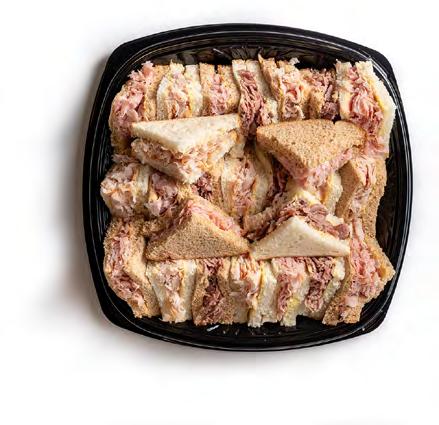
Today, popping open a tray from Rouses is by far the easiest — and most common — way to enjoy finger sandwiches at any gathering. But they are simple to make at home, if you’re so inclined. If you do, mind the following tips:
• If you are cutting off the crusts, it’s best to trim them with a serrated knife so as not to smush the soft bread.
• Once the sandwiches are made, diagonally cut them into quarters, so they make perfect triangles.
• To keep the bread from drying out, cover the sandwiches loosely with a clean damp kitchen towel and refrigerate until serving time.
The smoked chicken salad version below, from River Road Recipes III: A Healthy Collection, is a good go-to. Or you can use Mrs. Rouse’s Chicken Salad.
From River Road Recipes III: A Healthy Collection
Yield: 41/2 dozen tea sandwiches or 2²⁄₃ cups filling
6 boneless chicken breast halves, smoked and skinned
1 cup low-fat mayonnaise
3 stalks celery, minced
2 tablespoons green onion, minced
1 teaspoon Creole seasoning
¼ teaspoon black pepper
26 slices of whole wheat bread
Chop chicken and blend with mayonnaise. Add celery, green onions, Creole seasoning and pepper. Refrigerate. Spread mixture on half of the bread and top with remaining bread. Cut each sandwich into four pieces.
ARROW-CIRCLE-RIGHT Everyone has their own opinion and preference when it comes to mayonnaise. Hellmann’s is America’s most famous brand, and it’s a great all-purpose mayonnaise. But there are locals for whom Blue Plate means mayonnaise. Mayonnaise is a simple mixture of eggs, oil, and either vinegar or lemon juice; Blue Plate is made exclusively with egg yolks, which is one reason it tastes so satisfying. Our own Rouses Mayonnaise has a homemade flavor and creamy texture — we’re proud to put our name on it; Duke’s is tangier. Miracle Whip contains the same main ingredients as mayonnaise, but has less oil. It also has water, sugar and a unique blend of spices.
Chef’s Tip: Mayonnaise will help you get that perfect, golden brown crust on your grilled sandwich. Mayonnaise has a higher smoke point than butter, which prevents it from burning, and the added browning power of oil and egg yolks.

ARROW-CIRCLE-RIGHT Premium beef and turkey are roasted whole in many of our stores’ kitchens. We can hand-slice to your exact thickness.
ARROW-CIRCLE-RIGHT Few products have a deeper identity with the local market than Chisesi Ham. A fifth generation runs Chisesi Brothers, which has been in business in the New Orleans area for more than a century. Available sliced to order.
ARROW-CIRCLE-RIGHT Dietz & Watson deli meats, Italian specialties and artisan cheese are available packaged and sliced to order in the deli and cheese cases. This fourthgeneration owned and operated company, headquartered in Philadelphia, marks its 84th anniversary this year.
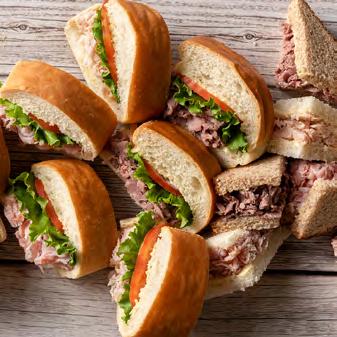
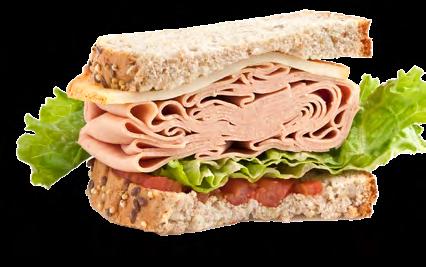
ARROW-CIRCLE-RIGHT The main ingredients in liver cheese are pork liver, pork and pork fat. The meat is wrapped in a narrow band of pork fat.
ARROW-CIRCLE-RIGHT Dietz & Watson uses queen olives with pimento, red peppers and sweet pickles in their beef and pork olive loaf.
ARROW-CIRCLE-RIGHT Hog’s head cheese is not a cheese, but a Cajun-style meat charcuterie made from ground pork. We carry Manda’s mild and spicy versions.
ARROW-CIRCLE-RIGHT We cut three kinds of bologna at Rouses.
ARROW-CIRCLE-RIGHT Mrs. Rouse’s Chicken Salad is made with a Rouse family recipe, using only the freshest and finest ingredients. It’s been a customer favorite for decades and a must-have for all parties and gatherings.
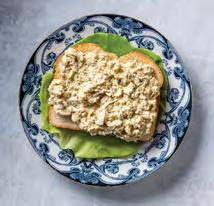
ARROW-CIRCLE-RIGHT If our name is on the label, you can trust it’s good. Our Rouses brand cold cuts are available hand-sliced fresh and in ready-to-go packages in our deli department.
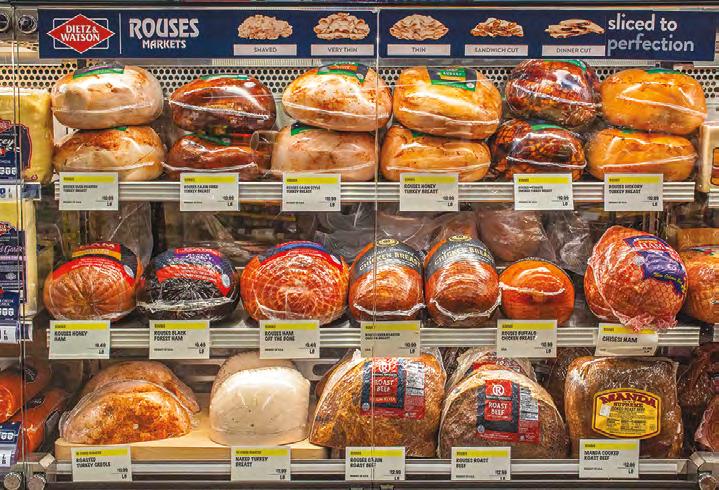

Makes 1 sandwich
You want to use a mild cheddar cheese rather than a sharp one; mild cheddar has the perfect melt and flavor. A smear of mayonnaise on the outside of the bread will give your sandwich extra crunch.
WHAT YOU WILL NEED:
2 slices sandwich bread
Butter
Mayonnaise
2 ounces grated mild cheddar cheese
HOW TO PREP:
Heat a heavy pan over medium-low heat. Thinly spread one side of each bread slice with butter. Slather the other side of each slice with mayonnaise and place the bread, mayonnaise-side-down, in the heated pan. Distribute the cheese evenly over the top of the buttered slices. Adjust the heat so the bread sizzles gently.
When the cheese is about halfway melted, use a flat metal spatula to flip one slice over on top of the other, and press lightly to encourage melting. Keep turning the sandwich, pressing gently, until it is crisp and golden on both sides, and the cheese is fully melted. Serve sliced on the diagonal.
TOMATO SOUP
Makes 8 servings
WHAT YOU WILL NEED:
½ pound butter
1 pound yellow onions (about 3 medium), cut into ¼-inch dice
1 stalk of celery, cut into ¼-inch dice
1 large carrot, peeled and cut into ¼-inch dice
½ cup all-purpose flour
4 28-ounce cans whole San Marzano tomatoes
2 tablespoons garlic paste
1¼ cups chicken broth
1 tablespoon kosher salt
¾ teaspoon freshly ground black pepper
¾ cup half-and-half
In a large pot, melt the butter over medium-low heat. Add onions, celery and carrot and cook, stirring occasionally, until soft, about 20 minutes.
Add flour and stir until mixture is slightly thickened and pale gold, about 3 minutes; do not allow to brown.
Stir in the tomatoes and their juices, garlic paste, chicken broth, salt and pepper. Raise heat to medium until the liquid bubbles, then reduce heat to low. Simmer for 30 minutes, scraping the bottom of the pot frequently.
Stir in half-and-half. Remove from heat and purée using an immersion blender or allow to cool until no longer steaming and purée in batches in a stand blender. Return to medium heat just until heated through. Ladle into warmed bowls, and serve with fresh grilled cheese.
ARROW-CIRCLE-RIGHT Sloppy Joe is a variation of the loose-meat sandwiches that first became popular in the 1920s. Both versions are made with seasoned loose-ground beef cooked with onions and served on a hamburger bun. What sets the Sloppy Joe apart is tomato sauce. Some Midwesterners call loose-meat sandwiches Maid-Rites, after the popular Maid-Rite restaurant chain, based in Iowa, or tavern sandwiches because of the connection to the Sioux City, Iowa restaurant Ye Olde Tavern, which also served loose-meat sandwiches.
Makes 6 sandwiches
Use an equal measure of ground pork and our fresh green onion sausage, casing removed, for a kickier blend.
For the Sauce
18-ounce can tomato sauce
½ cup ketchup
1½ tablespoons Worcestershire sauce
1 teaspoon prepared yellow mustard
½ teaspoon dry mustard
1 garlic clove, finely minced
Hot sauce, to taste
Salt & pepper, to taste
For the Meat
1 pound 80/20 ground chuck or 90/10 ground sirloin
½ small onion, finely chopped
6 hamburger buns
In a saucepan over low heat combine all the sauce ingredients. Season to taste with salt and pepper. Mix well and let simmer while preparing the meat. Heat a large, heavy nonstick or cast-iron skillet over medium-high heat. Add the
ground beef and sauté, stirring occasionally, for 4 to 5 minutes, or until the meat is no longer pink. Turn the meat out into a large strainer or colander lined with paper towels, and allow the fat to drain off.
Add the onion to the same skillet and sauté, stirring frequently, for about 5 minutes, or until the onion is translucent. Return the meat to the pan, and add the sauce. Heat for 3 minutes, stirring occasionally. Taste, and season with more salt and pepper if desired. Spoon ½ cup of the mixture over each bun. Serve immediately.
ARROW-CIRCLE-RIGHT The Reuben is a grilled corned beef and Swiss cheese on rye bread with sauerkraut and Russian or Thousand Island dressing. Corned beef is a traditional Irish-American food, and Callaghan’s Irish Social Club in Oakleigh Garden Historic District in Mobile makes an excellent Reuben. The Reuben is a delicatessen staple. Stein’s Market & Deli in the Garden District in New Orleans serves a classic version.
We sell a great corned beef and pastrami from Dietz & Watson, if you want to make your own.
ARROW-CIRCLE-RIGHT The traditional New York breakfast sandwich consists of eggs on a deli roll or bagel. There’s no wrong way to cook the eggs. Order it deli style, which means BEC: bacon, egg and cheese.

Makes 2 servings
The key to softy, velvety, fluffy eggs is to cook them low and slow, and don’t overmix — you want less stirring, more pushing and folding.
4 large eggs
¼ teaspoon kosher salt
1 tablespoon unsalted butter
2 tablespoons mixed fresh herbs, such as flat-leaf parsley, dill, sage, thyme and chives, coarsely chopped
Crack eggs into a medium bowl; add salt. Whisk eggs until completely homogenous and pale yellow in color, about 30 seconds.
Melt the butter in a medium nonstick skillet over medium-low heat. When butter foam subsides, add whisked eggs, and cook, undisturbed, until a thin layer of cooked egg appears around the edge of the skillet. Stir in the herbs. Using a rubber spatula and broad sweeping motions, push eggs all the way around the circumference of the skillet, then across the bottom. Continue to push eggs around and across skillet until fluffy and barely set, about 2 minutes. Immediately transfer the eggs to a bagel, roll or piece of toast; season with salt and pepper as needed.
REUBEN THOUSAND ISLAND DRESSING
Makes 11/2 cups
WHAT YOU WILL NEED:
1 cup mayonnaise
3½ tablespoons ketchup
2 tablespoons sweet relish
2 tablespoons finely chopped red onion
1½ teaspoons apple cider vinegar
½ teaspoon sweet paprika
Pinch of kosher salt
HOW TO PREP:
In a medium bowl, whisk together all ingredients. Use sauce immediately or refrigerate in an airtight container for up to 2 weeks.
REUBEN RUSSIAN DRESSING
Makes 1 cup
WHAT YOU WILL NEED:
½ cup mayonnaise
5 tablespoons ketchup
3 tablespoons dill pickle relish
1 tablespoon minced onion
1 teaspoon yellow mustard
1 teaspoon Worcestershire sauce
HOW TO PREP:
In a small bowl, combine all ingredients and mix well. Use sauce immediately or refrigerate in an airtight container for up to 2 weeks.

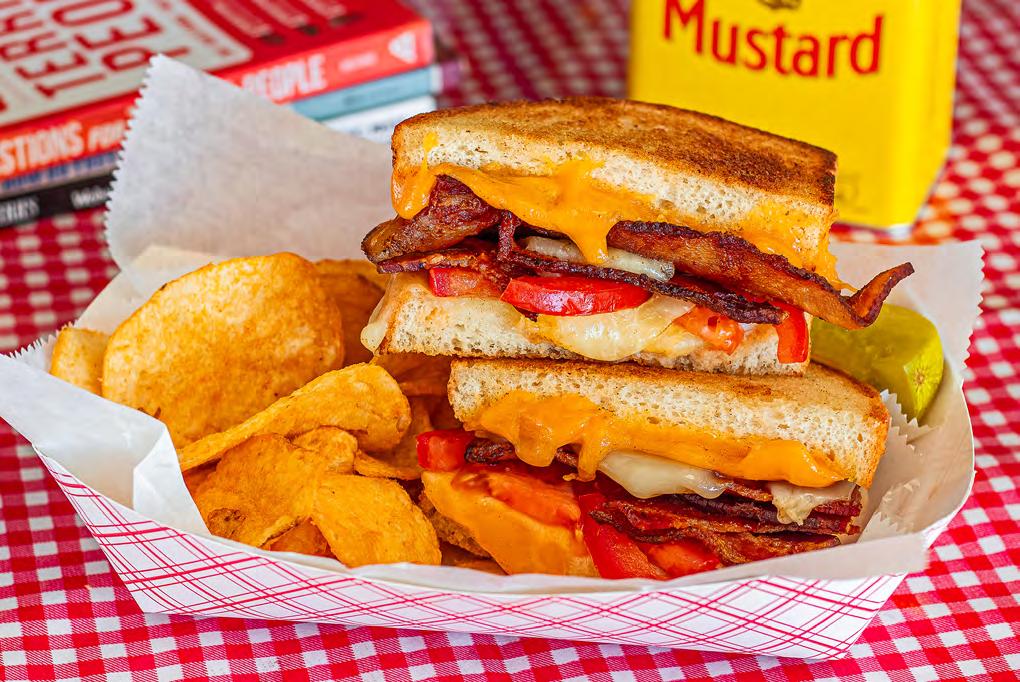 Mary Ann’s namesake sandwich on the restaurant’s menu is a grilled one, with piled-up provolone, Swiss, cheddar, tomato and bacon on sourdough, which is then given a nice, crispy sear.
Mary Ann’s namesake sandwich on the restaurant’s menu is a grilled one, with piled-up provolone, Swiss, cheddar, tomato and bacon on sourdough, which is then given a nice, crispy sear.
There are some indicators of personal success that are as obvious as a gleaming golden trophy, end-zone touchdown dance at the Super Bowl, or name scrawled across the side of a building in hulking brass letters. Others, though, are more subtle. The ultimate “I have arrived!” moment for a person might be making it from the couch to the finish line of a 5K charity race, finally getting up the nerve to sing Toto’s “Africa” at karaoke night, or mastering grandma’s lasagna recipe right down to the last sprinkle of parmesan. And while I wouldn’t turn down a Nobel Peace Prize, of course, the moment I’ll know that I’ve made it is when I have a sandwich named in my honor at a local restaurant.
The level of mutuality a person must have with a place before they’re considered close enough to have a sandwich named after them speaks to a symbiotic relationship between the restaurant and the patron. This doesn’t just mean being a repeat customer day in and day out — or even a good tipper. If the places where we eat are lodestars for community-building and connection over house-cured roast beef and well-seasoned French fries, then the person for whom a sandwich is named has to be someone who makes that restaurant a more generous, welcoming place simply with their presence. It’s the ultimate compliment to a person’s character, and no one know that better than the team behind Regina’s Kitchen in Mobile, Alabama, where many (many!) of the sandwiches on the menu at the legendary lunch spot are named after loved ones.
“Almost all the sandwiches on the menu are named after our family and our friends,” explains Mary Ann Florey, daughter of Regina’s founder, Regina Florey. “Some are nicknames — like the Jethro is my dad’s sandwich [roast beef, provolone, onion, lettuce, and horseradish sauce on French bread] because Jethro was his nickname in college and the Nellie [smoked turkey, ham, provolone, slaw, and barbecue sauce on French bread] is my uncle’s because their last name is Nelson — so the sandwiches have a lot of meaning because they’re named after people who’ve made an impact in our lives.”
Since opening in 2010, Regina’s foundational menu of named sandwiches, salads and soups has remained steadfast, with regulars frequently sneaking into the naming rotation on a limited-time basis through “unofficial sandwiches names” and specials. “All the regulars, all my friends, all the guys who worked at the restaurant always wanted a sandwich named after them — it’s an honor. Since we started, though, we haven’t really added any sandwiches, so that’s our set menu and those are our names. We occasionally name a special after somebody, but those core sandwiches are something people are kind of jealous of and always really curious about.”
Regina’s Kitchen is carrying on a proudly matriarchal family tradition of woman owned-and -operated businesses that make craveable, take-an-extra-home-in-yourpurse sandwiches: Her mother, Mary Ann Nelson, ran Mary Ann’s Deli — which had multiple outposts from Mobile to Spring Hill throughout the 1980s and ’90s, but finally landed on downtown Fairhope as the deli’s ideal location — until 2005, when she retired. “When I was born, my grandmother built her house to connect to the restaurant laughs the younger Mary Ann. “They were literally next-door neighbors with their restaurant!”
Having a restaurant that’s so much a part of one’s DNA that it’s treated as an extension of home and a cornerstone place for life to be lived was also passed down between generations, creating an atmosphere at Regina’s where camaraderie and playfulness have wound their way through the
part-time dishwashers, customers and, of course, family members who have pitched in to help make sandwiches over the years.
“Growing up, my mom [Regina] would always hire guys who were around my age to work as dishwashers and help run the sandwiches, but we called ourselves a kitchen family; we were a really tightknit group. We’d have Christmas parties, scavenger hunts and really just the best time pranking each other and goofing around at work,” Mary Ann remembers. “We always took it seriously enough, as serious as a sandwich shop could be, in order to make sure all the customers were having a good time, too. I never had brothers, so it was like having six brothers having fun while running sandwiches and doing dishes.”
Regina’s has always been a lunch-only restaurant, leaving stretches of long Alabama afternoons and warm, buzzy evenings with the building closed to customers but perfectly positioned to play host for family and friends. While many owners would simply lock up the doors at closing and head home until it was time to start slicing onions the next morning, Regina’s Kitchen never failed to open its doors for off-menu, extracurricular activities. “During homecoming week and after costume party dances, we would host all my friends at the restaurant. We’d have big parties there — everyone would be dressed up — and my mom would cook steak and fried shrimp, and we’d have a party bus take us away. We really used that space as a gathering place outside of it just being a restaurant as a location where
we could all get together. We’ve even hosted Thanksgivings there!”
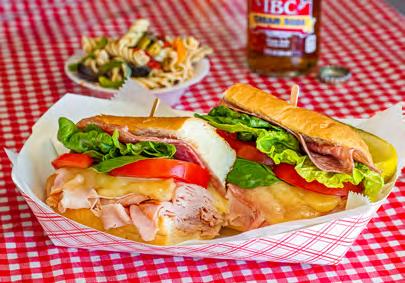

The restaurant downsized in 2019, moving from a spacious dining room decked out in eclectic folk art and paintings with “30 or 40 tables” down to “four inside and four outside” at their current location close to downtown Mobile near Brookley Field “My mom calls it a food truck on land — like a grounded food truck. It’s super-small and she loves it,” says Mary Ann. “People always say, ‘Oh my gosh, you should open more locations!’ But she always says, ‘We’re too busy! We don’t want more people. We like how it is.’ That’s usually the opposite of what people do with a successful restaurant, but my mom always says, ‘There’s only one of me. It’s less fun when it’s so crazy.’ She doesn’t want to stretch herself too thin.”

Keeping crazy to a minimum is a laudable (and ambitious) goal for any business owner, but particularly one who owns a restaurant where the tables are always full thanks to throngs of loyal customers who pledge their allegiance to pretty much every dish on the menu — and not just the sandwiches. From the fruit salad with poppyseed dressing (which you can also buy by the quart) to Mississippi mud cake to the rich, warming French onion soup, Regina’s Kitchen’s reputation proceeds it with locals and out-of-towners alike.
“Everyone has pretty much been to Regina’s, and people know it very well. When I introduce myself to people, sometimes I say, ‘I’m Mary Ann. My mom owns Regina’s.’ And if they’re an older crowd, I’ll say, ‘Oh, my mom owns Regina’s, and my grandmother had Mary Ann’s.’ People really know the restaurant names.”
Making sandwiches for years in her family’s restaurant means that Mary Ann has amassed an encyclopedic knowledge of ways for home cooks to take their betweenthe-bread snack-making to a different dimension — including a few trade secrets from Regina’s Kitchen. “Most importantly, you have to use quality ingredients, and don’t be scared to put fun, random stuff on a sandwich! We love having specials that include apple and cranberry and other more outside-the-box things,” explains Mary Ann.
“We use a steamer to melt our cheese, but if you want that ‘melty cheese’ effect at home, after you grill your sandwich, cut it down the middle and put it with the inside facing down on the pan. This will warm up the middle and your first bites will be as ‘melty and good as your last. I always get a grilled sandwich because I love how it turns out kind


of crunchy on the outside with ‘melty cheese on the inside.”
It probably comes as no surprise, then, that Mary Ann’s namesake sandwich on the restaurant’s menu is a grilled one, with piled-up provolone, Swiss, cheddar, tomato and bacon on sourdough, which is then given a nice, crispy sear. “I originally wanted my sandwich to be the Italian sandwich, but it became my sister’s — the Cecilia — because her name sounds more Italian. As far as favorite sandwiches go, I really like the Joe Collins. It’s named after one of my dad’s best friends from college, and it has our roast beef that we make in-house along with homemade jalapeno cheddar, tomato and onion on French bread.”
Jethro, Nellie, Cecilia, Joe Collins — chatting with Mary Ann about the sandwich namesakes that have swirled around her
since childhood made me get a little more serious about nailing down what exactly my namesake sandwich would be if any restaurant came calling with such a distinctive honor. It might have a thin layer of marinated artichokes atop cornmeal-battered oysters with pickled carrots; or maybe it would be made using an olive-speckled sourdough; or maybe its notoriety would come from its delivery style: the sandwich wrapped tightly, then tossed across the room to a customer like an edible football.
“The Sarah, order up!” I can hear it now… Hey, a girl can dream.”
REGINA’S HONEY MUSTARD
This delicious honey mustard is straight off the menu at Regina’s Kitchen. Pair it with turkey, provolone & coleslaw on rye bread for an at home version of their famous Haas sandwich. Makes about 3 cups
WHAT YOU WILL NEED:
½ lb dark brown sugar
¾ cups mayonnaise
¼ cup horseradish
2 tbsp vinegar
¼ cup dry mustard

¼ cup oil
¼ cup honey
HOW TO PREP:
In a medium bowl, whisk together all ingredients. Use sauce immediately or refrigerate in an airtight container for up to 2 weeks.
Opposite, clockwise from top left:
ARROW-CIRCLE-RIGHT The Cecilia — an Italian sandwich — is named after Mary Ann’s younger sister.
ARROW-CIRCLE-RIGHT If you love a good cheese pull, order the Mary Ann.
ARROW-CIRCLE-RIGHT Sandwiches hot off the grill are a specialty at Regina’s Kitchen. Photo by Jeff Tesney
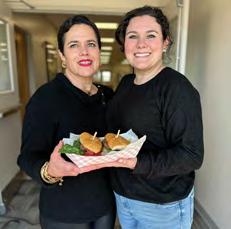

ARROW-CIRCLE-RIGHT The Haas sandwich has turkey, provolone, coleslaw and honey mustard grilled on rye.
Above:
ARROW-CIRCLE-RIGHT While many owners would simply lock up the doors at closing and head home until it was time to start slicing onions the next morning, Regina’s Kitchen never failed to open its doors for offmenu, extracurricular activities. Photo by Jeff Tesney
ARROW-CIRCLE-RIGHT “ My mom, who has worked in restaurants — never an office — all her life, had been telling me for months that she was going to drive to Thibodaux to surprise me at work. I gently tried to explain that parents usually don’t just pop in at their children’s offices. But after everyone heard so much about her and her sandwiches, I was the one who surprised her with an invite to the office. She made five of her famous sandwiches for us, including the Mary Ann, a grilled provolone, Swiss, cheddar, tomato and bacon sandwich on sourdough. Here are a few behind the scenes photos.” – Mary Ann Florey, Designer at Rouses Markets

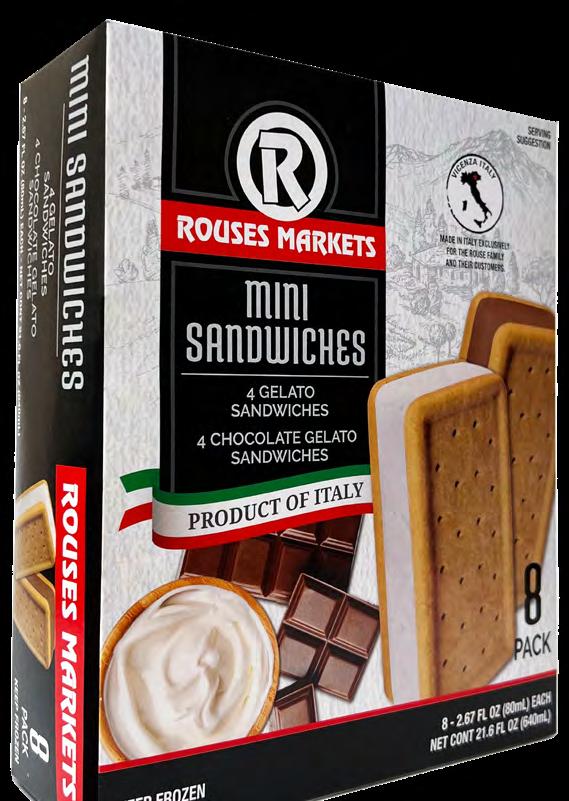

y list of what is and is not a sandwich is ironclad (see: ‘Wich Is It? on page 39). Some of you, I know, read it, your knuckles turning white as you squeezed this copy of Rouses Magazine in your hands. “A po-boy is not a sandwich?!” you raged to the heavens like King Lear.
Even the other writers and the editor of this magazine were outraged at me, though how someone would think a hot dog is a sandwich is beyond me. (It’s a burrito — which, I know, also annoyed you.)
Dear reader, I am willing to admit when I am wrong, and if ever I am, I will do so. But that has not happened yet. Still, in hopes of keeping my job, I have decided to offer a small concession, with an asterisk the size of a supernova: the “novelty dessert sandwich.”
I assert up front that this is not a subset of sandwich (as these are not sandwiches) but rather, a novelty appropriation of the word “sandwich,” culturally accepted because our language is ever evolving (which I also do not like, but that’s a discussion for another day).
In short, I am trying to reduce the amount of hate mail I get this month, though I encourage you to write anyway, because I’m always looking for reading material to help me fall asleep at night. So here goes.

As stated in my other piece, an ice cream sandwich is neither a communal food, nor does it use sliced bread (which is basically the main rule of being a sandwich), but this made a lot of (mistaken) people very angry — people don’t like to be wrong — and so I have moved it into to the “novelty dessert sandwich” category, which I must again state is not a subset of “sandwich,” but rather, a different thing entirely that just happens to use the same word. I will not yield on this. Grab your pitchforks and storm my house and still I will shout at you from my porch how wrong you are, even as you erect a witch-burning pyre and prepare to cleanse my soul.
I grant you that an ice cream sandwich involves a filling between two baked goods — in this case, soft, flat, chocolatey cookies — and they are delicious (like actual sandwiches). Congratulations, ice cream sandwich. You make the novelty sandwich cut. Namaste.

but rather, use sandwich as a verb. (I cannot argue with anything else in their description. Oreos are a great, gluten-free, vegan snack.) Because of their honesty, flavor and fun, I hereby grant them novelty dessert sandwich status.
Note that macarons and Little Debbie Oatmeal Creme Pies also fit this description, and are thus novelty dessert sandwiches as well. Macarons are colorful Oreos that went to college. Little Debbies…well, after high school they decided to take a gap year to find themselves. It’s just been a very long gap so far. They’re still delicious, though.
Oreos bills themselves as “supremely dunkable,” cookies that “sandwich a rich creme filling between the bold taste of two chocolate wafers — making them milk’s favorite cookie.” Note that they don’t exactly claim the domain of sandwichdom

The main difference between an ice cream sandwich and a cookie sandwich is that cookie sandwiches use chocolate chip cookies as their ersatz slices of bread. Filled usually with vanilla ice cream, and rolled on the sides with chocolate chips, they are just too good to ignore, and on a long-enough timeline I suspect they will overtake ice cream sandwiches as the frozen novelty dessert sandwich of choice.
If you want to create a glorious cookie sandwich at home, here is a short recipe you can prepare yourself that will make your kids go wild (possibly from a sugar rush, but also from joy).
First, make chocolate chip cookie dough, or buy a tube of pre-made from your local Rouses. Next, line a square baking pan with parchment paper. Add the raw cookie dough to the pan, pressing it out to meet all sides. When you are done, it should be smooth and flat. Throw the pan in the freezer. Now, get some ice cream from Rouses, and leave it out until it softens (not until it’s ice cream soup — which is, I assert, a soup — but until you can spread it easily). Take the baking pan from the freezer, and spread the ice cream across the top of the cookie dough layer. You want it to be about
1.5 inches thick. Stick the whole thing back in the freezer to harden. Once it is firm, again pull the pan from the freezer and spread one final edge-to-edge layer of cookie dough atop the ice cream. Return it to the freezer and let it freeze for several hours. When dessert time comes along, slice your frozen goodie into squares, and to remove them from the baking pan without breaking them, lift gently with the parchment paper and take each in hand gently. It will be the best cookie sandwich you have ever had.
requires fire and coat hangers to create, and whose filling can range from slightly gooey all the way to charcoal. Two graham crackers, a Hershey’s chocolate bar and marshmallows: Who would have guessed that they would join together to light up every pleasure center of the human brain?

S’mores are like the funky best friend of Oreos. They have great fashion sense, know all the coolest music, and are the life of the party. (They can also be a little needy.) Additionally, they are the only novelty dessert sandwich in this piece that

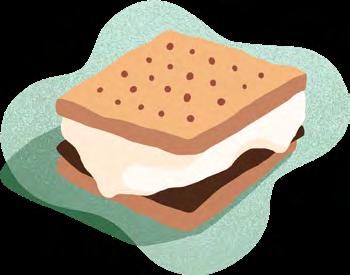
Of all the novelty dessert sandwiches on the list, MoonPies are the only ones with a wicked cool Twitter presence. (A couple of favorite tweets of theirs: “Nothing quite like finding the great taste of MoonPie® in a place where you least expect it like under your pillow or in the back of a police car.” Or when a Twitter user named Kaela tweeted, “They should call you MoonBye because nobody likes you,” to which MoonPie responded: “They should call you Kayla because that’s how it’s supposed to be spelled.”
What is so beautiful about MoonPies is not only the perfectly balanced cookiemarshmallow-cookie novelty dessert sandwich structure, but that the whole thing is shrouded in chocolate, and is thus a perfect physical manifestation of joy.
In summation, novelty dessert sandwiches are sandwiches in the way that an ice cream cone is a sweet, open-ended burrito, or that a pita is just a taco with a fluffy shell and different seasonings. And yet, the people have spoken. Enjoy your novelty dessert sandwiches, dear Rouses readers. Tell yourselves that, yes, your Oreo is a sandwich. You know the truth in your heart; but in hard years, sometimes a little delusion is just what the doctor ordered. And if you can find a doctor who prescribes Oreos, keep them.
















Get live Louisiana crawfish by the sack or hot from the pot. Our down-the-bayou recipe has been perfected for over three generations, so our seafood always comes out seasoned to perfection


